
I have been meaning to sit down and write this post for awhile. So many of you have taken the time to message/e-mail me about your own pregnancy journey and we have been able to connect on so many levels. For me, this has truly been one of the greatest gifts made possible by this online community. If you missed our pregnancy announcement , you can read that story here – it goes a bit into our journey and how we got to where we are today. Like I mentioned in that post, I felt as if there was so much I wanted to say about our IUI experience, and infertility in general, that I needed to make it its own post, so here we go.
Admitting it was time to see a fertility specialist…
Matt and I struggled to conceive for a little over a year before deciding to go the fertility specialist route. I was 30 at the time and while that isn’t old for “trying” my OB sat down with me around the 8 month mark and just had a candid conversation about starting to consider next steps. I instantly shut down and insisted on continuing trying naturally each month like we were, even though it was such an emotional roller coaster and something I struggled with silently (and not so silently with Matt). It wasn’t until I was on a bachelorette party late last spring where I spent some time chatting with our family friend (who had her twins with the help of IVF) that I started to seriously consider seeing a specialist. She asked me what my biggest fear about seeing a fertility specialist was and at the time I had no great answer besides feeling like “I failed” and giving in to needing help. After talking with her about her own journey, I stated to ask myself what is the worst thing that could happen with just scheduling an appointment and having an initial chat? I thought about this for awhile and it was just what I needed to put things into perspective for myself. Ironically, during this trip I also started spotting way before my period should have arrived (which was my constant struggle month after month) and broke down and called my mom and Matt in tears as it was one more month of lost hope. After returning home to NYC, I talked again with Matt and finally dug out the fertility doctor recommendations that my OB gave me months before.
Figuring out a fertility treatment plan…
After some initial research of fertility practices in the area, we landed on Dr. Alexis Melnick. As I mentioned in my last post, I could not recommend this practice enough. I never felt like a patient, if that even makes sense, but more like family. Once we had our first consultation everything just clicked and it was the first time since we started trying that I cried happy tears and truly was overcome with a sense of relief. I left feeling positive and hopeful for what was to come. We had some additional blood work and tests done (both Matt and myself) and still no real answers came back as to why we were struggling. We were experiencing what is referred to as “unknown infertility” — on paper everything looked fine for both of us, but for whatever unexplained or undiagnosed reason we were having trouble conceiving. Given this history, Dr. Melnick decided she wanted to start more conservative and move forward with a natural IUI . This means that I would not take Clomid or any other medication that would increase my egg production.
Stay off Google…
Before I dive into the IUI, when seeing a fertility specialist it is common to have an HSG test done which is also known as the “dye test” to check your fallopian tubes. DO NOT, DO NOT read things on the internet about this test. I actually listened to my doctor who told me this and only asked my best friend who had it done a few general questions. Afterwards, I was curious to see what the internet would say and gave it a Google and oh my word. People made it out to be the worst thing they ever experienced in their life. While yes it was slightly uncomfortable, it literally lasted under 30 seconds and you just breathe through it (think heavy menstrual cramps). I went in with the mindset of I literally would do anything for the possibility of becoming a mom and that mentality got me through it.
As for the IUI, she gave me the same “do not Google” instructions and to call her with any questions. Let me tell you she was right! I of course didn’t listen (was waaaayyyy too curious about everything and finding others so I didn’t feel so alone) and after one search promised myself I would never Google anything about an IUI again; you can truly go down a dark rabbit hole of forums, mind games and people only talking about the worst of the worst experiences. Instead, I went back and read other blog posts from gals I knew who went through similar experiences and shed their more personal/positive light on the situation, which is what I hope to do today!
Matt also has a better sense of what to believe (and not to) on the internet (and he doesn’t get so emotional ha), so sometimes he would research things and share only what was helpful with me.
Oh insurance…
Before I get into what we did leading up to our first IUI, I have to touch on the insurance part, which to be honest did me in emotionally. I am sure every experience is different, especially depending on your insurance, but you need to have a LOT of patience and persistence when dealing with insurance, especially when trying to get the approvals and documents needed to order the progesterone and trigger shot (the shot you receive 24ish hours before the IUI that boosts ovulation). I spent hours a day back and forth between insurance companies, the company where I had to order the trigger shot from, etc. and, to be honest, there were many many tears. I felt like no one was listening and everyone was just passing me off to someone else on the chain with false promises. I just want to be real with you all, because this process is such an emotional thing to begin with that it is okay to have days where you just break down and feel like you need to throw in the towel. Let yourself have those moments or days, but also don’t give up when it comes to dealing with these insurance companies! Your fertility doctor’s office should give you paperwork, explaining step by step what you need to ask for and approvals you need to get. Just try and take it one day at a time, follow up, right down names of people you talk to and get direct numbers when possible. If all else fails, get a little pushy and demanding!
Preparing for the IUI…
Matt and I decided if we were going this route and investing in it financially, we wanted to make sure we did everything to the best of our ability to help our chances. Not saying any of this was the magic answer, but I did want to share with you all an honest recap of everything we did, both before and after the procedure. About 10 days before our first IUI, Matt and I both cut out alcohol consumption (Matt also stopped drinking coffee during this period), he started working out, and really watching what he ate and I continued to exercise, but stuck with Pure Barre and nothing too intense. I had always been a healthy eater, but paid extra attention to making sure I was getting enough veggies, protein, etc. Matt also started taking a daily vitamin and tried to eat things that apparently help with sperm quality/production, like walnuts and asparagus. The night before we went out for an amazing oyster dinner (zinc in oysters is rumored to boost things in this department ha). These steps were probably completely unnecessary, but we did it anyway – our attitude was always, why not.
Leading up to the IUI there are a lot of doctor visits to measure your follicles, give blood work, and then finally the trigger shot to boost ovulation. I believe one week I was going in at least every other day because they want to time everything just right. So it can be a lot, but at least the office I went to was very punctual and accommodating when it came to scheduling.
Go time…
July 14, 2018 will hands down be a day that Matt and I will never forget. We woke up nervous, excited, but trying so hard to keep emotions at bay and remain stress free. My peak ovulation day and the day of our IUI happened to fall on a Saturday, which with Matt’s schedule was perfect because I knew he would be in a better mindset than having to take off work or rush into work afterwards. When we arrived at the hospital in the morning, we checked in and shortly after Matt was called to go give his “donation.” Afterwards, the process of sorting through and picking out the best sperm takes about an hour, so Matt and I left and grabbed a bite to eat to take our mind off of things. When we came back it was time for the IUI and Matt was sitting by my side for every step of the way.
The procedure itself was FAST and not painful for even one second. I am talking less than a minute if I remember correctly (once again, can vary for everyone) and then I had to lie down flat for 15 minutes. This is where the procedure ends for most people, but where things got a little interesting for me. I am only sharing this because it is part of my story, but also exceptionally rare and something that has happened to me a few times in the past, so I at least knew it was a possibility. About 5 minutes into just lying and relaxing I started to feel my body go tingly and get hot and turned to Matt to let him know what was happening. We waited it out for a few more minutes before he went and got the doctor. In the end, I was having a vasovagal response, which means my body overreacted to a certain trigger and you become what feels like paralyzed for about 45 mins. My hands and legs clench so tight and can’t move, I can’t really talk and I get really bad sweats. I felt weirdly calm during the entire IUI, so I am still not sure what the trigger was. But like I mentioned, this is something that has happened to me in my past (sometimes when I worked at the hospital when watching certain procedures, during field hockey pre-season practice and my first day at work in the Big Apple when I worked in advertising for a hot second), so as scary as it was, it wasn’t a total shock..maybe just for Matt who was seeing it first hand for the first time hah. Matt did his best trying to make me drink liquids and keep me calm, but you truly just have to wait it out and let time pass. Like I mentioned, I debated adding this detail in, because it is so unlikely and I am not trying to scare anyone. More than anything, I was just concerned this episode would hurt my chances of the IUI working and that turned out not to be the case! So regardless of what happens during your IUI, remain positive and hopeful! T
We read that it’s best to relax after the IUI if possible, so I spent the rest of the day at home on the couch and honestly took the next two or three days to veg out and let my body relax.
The dreaded two-week wait…
For those not familiar, the two week wait is the period of time between a pregnancy attempt and when the pregnancy can be detected. During this two week wait I made some changes and did things that I had not tried in the year leading up to this. First, I decided to forego working out. Although it may sound silly, this was a really hard decision as I love going to Pure Barre as a stress reliever, but Matt felt very strongly that I should do this. Had I known I would get pregnant this cycle, deciding not to work out would have been the easiest decision ever, but remember we had been trying for a year, so deciding not to work out during this period could mean you cannot work out 2 weeks of each month.
During this two week wait I also conformed to EVERY “wives tail” for getting pregnant. These very well could all be complete myths and don’t actually help your chances at all, but we were really game to try whatever could help our changes! Some things I did included eating the core of a pineapple (spaced out over 5 days), drank whole milk (this was hard for me as I can’t stand it), ate Brazilian nuts and continued to avoid alcohol and caffeine.
I also was put on 100 mg of progesterone (a suppository) during the time (also, no where as bad as people on the internet make it seem, just a bit annoying having to wear a pad every day). Warning : the progesterone can really mess with your head, a total mind F* in my opinion! This is because its side effects generally mirror those of pregnancy symptoms, so while I felt like I could be pregnant through this period, I didn’t know if it was just the progesterone! It was so incredibly hard not to get my hopes up as every single month for the past year+ I would look for any and all pregnancy symptom before my period would come. I tried my hardest to not read into things and went in with the mindset of “I know the chances of your first IUI working (usually takes about 3) is rare, so whatever happens, happens”.
Each month this two week period feels like it never ends, but this month it truly felt like an eternity! I really did fell pregnant, but didn’t want to get my hopes up and be disappointed, yet again. After about 14 days, I could have taken a pregnancy test to find out if I was indeed pregnant, but couldn’t bring myself to do so (Matt thought I was crazy ha). But when you have an IUI you have to go in to the doctor for blood work no matter what, where they will determine definitively whether you are pregnant. Knowing that I would have to do this, I opted not to take the home test out of fear of being disappointed twice.
You all know how this story ends, but getting the call a few hours after the blood test telling me I was pregnant was the best phone call of my entire life! I will never forget where I was sitting, what I was wearing and the pure shock/happiness I felt all at once. Hands down, it was truly the best day of my/our entire life.
For the next few weeks I was on such a high, but also struggled for AWHILE (and up until lately still did) with living more in fear with this pregnancy than truly enjoying it. This is something that is hard for me to type, but want to put out there because I don’t think the fears of pregnancy and holding onto that pregnancy are talked about enough. I was so scared before every doctor appointment and would feel sick to my stomach going in until we heard “everything looks great”. Each week got a little bit easier, but I honestly don’t think it was until halfway through my second trimester that I fully could relax and enjoy this amazing gift without worrying about the “what ifs”. We stayed with our fertility doctor until we heard the heart beat (around 10 weeks – this varies for everyone) and then we were transitioned back to my OB. I was also on the progesterone almost through my first trimester and to be honest really struggled with stopping that as well and was scared to death as the progesterone helps everything “stick” and known to decrease your chance of miscarriage.
You are not alone…
I realize how fortunate we are that our first IUI was a success. I know this is often not the case (it tends to have more positive results after successive rounds), so I do feel like the lucky ones. But to all you out there trying month after month to get pregnant, please know that you are not alone and do not give up hope. Remember that the longer you wait for something, the more you’ll appreciate it when you get it. Looking back on everything now, the journey we went through honestly now feels like 1 second long. If I can ever be a resource for you on your pregnancy journey, please do not hesitate to reach out. You can e-mail, leave a comment below, DM me, whatever you need I am here…just remember, we are strong, incredible women that are capable of anything, somethings just take a little time, but don’t give up! xo

You might also like
- Baby + Kids + Motherhood Allergy Food Challenge
- Motherhood Baby Essentials
- Interiors + Decor + Motherhood Kids Organization Tips
- Motherhood Valentine’s Day Ideas
Similar Locations
- Travel Guides Block Island Travel Guide
- Travel Guides Portsmouth, NH Travel Guide
- Travel Guides Greenport, NY Travel Guide
- Travel Guides Anguilla Travel Guide

- Shop My Instagram
Single Mom By Choice - Erin's IUI Journey Really Riley
- Society & Culture
As a former single mom myself I can empathize with what it means to bring a child into this world knowing that you are more than likely going to have a very different road into parenting that someone who has a partner to help lighten the load. But rather than fear it, there is a whole community of parents that embrace it and choose to go it alone. In this episode I interview Erin, who is a single mom of two beautiful boys that she has chosen to conceive and raise solo. Erin realized from a relatively early age that she wasn't having the best luck in relationships but she was certain she wanted to be a mother and raise her children in as calm and enrichment as humanly possible. So rather than wait for the perfect person to come along and risk the chance of her fertility taking the chance at motherhood from her, she went on an IUI journey that resulted in her beautiful son, and later and IVF journey that gutfed her a second baby boy. He story is such an interesting an inspiring one that sheds light on the fact that there is entire community of families that are thriving outside of what some may say are the traditional norms. ENJOY! reallyrileypodcast.com Become A Part of The #WeGotThisArmy FOLLOW ME ON SOCIAL Instagram @rileycouture @reallyrileypodcast @houseofwbyriley TikTok @rileycouture7 @reallyrileypodcast @houseofwbyriley YouTube @reallyrileypodcast To advertise on The Really Riley Podcast contact Detra Jones Emails : [email protected] Phone : 731.612.2310 Learn more about your ad choices. Visit megaphone.fm/adchoices
- More Episodes
Top Podcasts In Society & Culture

Understanding the IUI Process
The first key to a successful IUI lies in comprehending the procedure itself. IUI involves placing sperm directly into the uterus to facilitate fertilization. Timing is critical, and your healthcare provider will guide you on the optimal window for the procedure. This process, though relatively simple, requires precision and careful planning.
IUI is typically recommended when there is a suspected issue with the cervix or fallopian tubes, as it allows bypassing the problematic part of conception. Similarly, if sperm analysis indicates a low sperm count or other impairments, IUI ensures that only high-quality sperm is selected and used during treatment. It is also an option for fertility treatments involving donor sperm, catering to both heterosexual and same-sex couples, as well as single women seeking to conceive.
IUI differs from IVF , as it is known as a less invasive assisted reproduction technique. It is considered the first line of treatment in some cases.
Preparing Physically and Emotionally
Before diving into the procedure, it's essential to prepare your body and mind. Nutrition plays a pivotal role in fertility. Ensure your diet is rich in nutrients that support reproductive health. Exercise moderately, as studies show a positive correlation between physical activity and fertility.
Additionally, managing stress is crucial. High stress levels can impact fertility, so consider incorporating relaxation techniques into your routine. Seek emotional support from friends, family, or even a counselor who specializes in fertility matters.
Optimizing Fertility Health
Understanding your reproductive health is fundamental. Before undergoing IUI, both partners should have a thorough fertility evaluation. Typically, this involves blood tests to assess ovarian reserve and other hormones, along with vaginal ultrasounds for the female partner, and a sperm analysis for the male partner. This step helps identify any underlying issues that may affect the success of the procedure. Addressing these concerns early on significantly improves your chances of success. For instance, a successful IUI with low sperm count is possible, as long as the condition is identified, and corrective measures are taken to select the best sperm for fertilization.
In some cases, fertility medications may be prescribed to improve the likelihood of a successful IUI. These medications stimulate egg production and regulate ovulation timing. The latter, known as a "trigger shot," is among the most critical factors for a successful IUI. Avoiding any trigger shot mistakes is crucial.

Timing and Tracking Ovulation
In the realm of IUI success tips, it's fair to say that optimal timing is the most crucial aspect. Fortunately, you won't be alone. Your fertility doctor will provide you with the necessary tools to track your menstrual cycle, will prescribe medication as needed, and will time the IUI procedure for you.
The key here is to strictly follow their advice and maintain open communication. If you notice any changes in your body, inform your doctor right away. If you make a mistake in administering the required medication, let them know promptly. Mistakes are human, and being honest about them can make the difference between a failed IUI cycle and a successful one.
Ensuring a Supportive Environment
A key, often underestimated, aspect of IUI success is maintaining a supportive and communicative environment. Nurturing a healthy relationship with your partner—or building a strong support network if you're undergoing IUI on your own—during fertility treatments is essential. Open communication helps manage stress and reduce anxiety, creating a more conducive environment for success.
Similarly, setting realistic expectations about the outcomes of the procedure and understanding what you need to do at each step can empower you and give you a sense of control. Discuss any concerns with your fertility doctor and delve deeply into any expected IUI side effects. Although the procedure is generally painless , ask about measures to alleviate any discomfort—especially if you are particularly sensitive. Learn how your particularities, such as your age or partner's sperm count, affect your chances of success. Remember that there are no right or wrong questions, but if you have doubts, an expert fertility buddy can help prepare you with the relevant aspects to discuss, making sure you don't leave anything out.
Post-IUI Care and Monitoring
After the IUI procedure, it's natural to wonder what comes next. Understanding what to expect and being aware of potential signs of success or concerns is crucial.
Approximately 10-20% of couples may conceive after a single IUI cycle, with success rates increasing with multiple cycles. IUI success stories often serve as a source of hope for many. However, it's essential to stay realistic and patient as success rates vary based on individual circumstances.
Regular follow-up appointments with your fertility doctor are vital for monitoring progress and making any necessary adjustments to your treatment plan. Maintain the good habits in terms of nutrition and mindfulness that you picked up while preparing for the procedure; they will continue to serve you. Be prepared for a range of emotions during this waiting period, and lean on your support system for strength.
Main Take-Aways
In conclusion, the keys to a successful IUI involve a combination of understanding the procedure, preparing both physically and emotionally, optimizing fertility health, accurate timing, maintaining a supportive environment, and post-IUI care. While success stories inspire hope, it's essential to approach the journey with realistic expectations. Fertility treatments are a process, and success may require multiple cycles.

What to Expect During Your IUI Journey
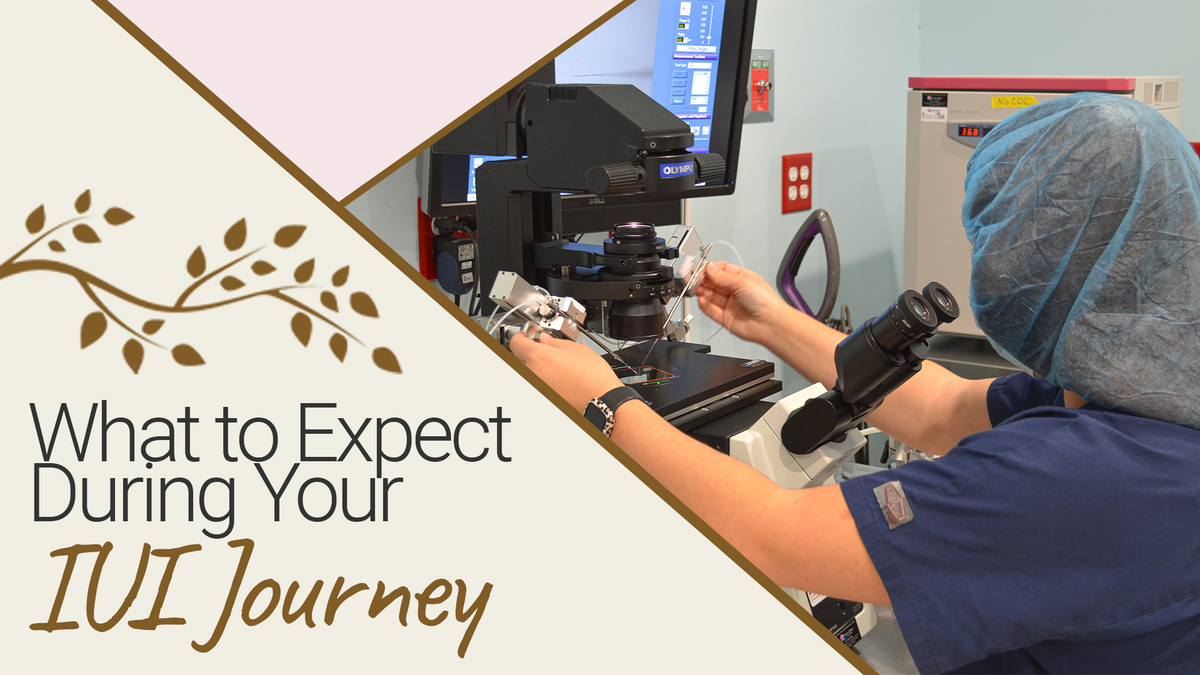
Artificial insemination, often called intrauterine insemination or IUI, is a treatment used to address common fertility issues in either partner or impregnate a woman via a sperm donor. We sometimes call IUI treatment “low-tech” fertility treatment as it involves a sperm sample and a catheter that inserts sperm into the uterus. Compared to other fertility treatments, this process is relatively straightforward and does not require the use of anesthesia or technologically advanced equipment. IUI fertility treatment is often best for women who have trouble ovulating, men with mild male fertility factors, and same-sex women couples looking to get pregnant via a donor. The ideal female candidate for IUI will need functioning ovaries, Fallopian tubes, and a uterus. IUI fertility treatments are right for many people, and patients often wonder what to expect from their IUI journey. This blog post will lay out all the facts, so you know what to expect on your journey. We will walk you through each step of IUI treatment detailing what you can expect on each stage.
Detailed Walkthrough of the IUI Process
Starting or continuing your family is important. For women who have trouble ovulating or those who have blockages or scar tissue in their reproductive system, IUI represents an improved chance of getting pregnant without choosing “high-tech” fertility options like IVF or INVOcell. Let’s take a closer, detailed look at the five steps of the IUI process so you can know what to expect on each step of the journey.
Step One: Dr. Chin will Determine Your Menstrual Cycle
When embarking on your IUI journey, the first crucial step is to have a thorough understanding of your menstrual cycle. To accurately track your cycle, Dr. Chin may measure your hormone levels or perform ultrasounds to pinpoint when you'll be ovulating. This precise timing is crucial, as it ensures that the insemination procedure aligns with the optimal period for conception. If your menstrual cycle starts on a weekend, don't worry! Dr. Chin is committed to providing comprehensive care, so appointments will be scheduled regardless of the day. The ultrasound is done to perform a thorough examination of your ovaries. This step ensures that there are no cysts present and no developing follicles that could interfere with the procedure. In addition, bloodwork will be done to assess your hormone levels and rule out the possibility of pregnancy.
Step Two: Sperm Sample Collection and Sperm Washing
The next step is the collection of a semen sample. At this point, your partner will either be asked to provide a sperm sample or a donor's frozen sample will arrive at our office. When it comes to collecting a sperm sample, your fertility specialist will provide you with specific instructions. Typically, the sample is collected at our fertility clinic. We offer a private room where the male partner can comfortably provide the sample. Once the sample is collected, it undergoes a process called sperm washing. This procedure involves separating the healthy sperm cells from seminal fluid, debris, and other unwanted substances. Sperm washing is performed in our laboratory by our team of medical fertility experts. The goal of sperm washing is to ensure that only the best quality and motile sperm are used for the IUI procedure. By removing potentially harmful substances and concentrating the sperm, the chances of a successful pregnancy are increased. If you have concerns or questions about the sperm sample collection or sperm washing processes, contact our team or ask Dr. Chin during your appointment.
Step Three: Intrauterine Insemination (IUI)
Once Dr. Chin has successfully identified your ovulation window, he will prepare you for the IUI process. A thin catheter is gently inserted into the uterus through the cervix, and the healthy sperm is delivered directly into the uterine cavity. This procedure is usually painless and does not require anesthesia. You might experience mild cramping or discomfort, but it usually subsides quickly. The success rate of IUI varies depending on factors such as the quality of the sperm sample, the woman's age, and any underlying fertility issues. However, on average, the chances of pregnancy with IUI range from 10% to 20% per cycle, according to the National Health Institute . It may take multiple attempts before achieving a successful pregnancy.
Step Four: Rest and Progesterone Test.
After undergoing an IUI procedure, it is important to allow your body time to rest and recover. Dr. Chin advises resting for about one week after the procedure. This downtime allows your body to relax and reduces any potential stress that could interfere with the implantation process. Once the rest period is over, Dr. Chin will perform a progesterone test. This involves a simple blood draw to check your progesterone levels. Progesterone is a hormone that is crucial for supporting a healthy pregnancy. It prepares the uterine lining for implantation and helps maintain the pregnancy in its early stages. By assessing your progesterone levels, Dr. Chin can ensure that they are within the appropriate range to support pregnancy. If necessary, he may prescribe progesterone supplements to boost your levels and enhance your chances of a successful pregnancy.
Step Five: Pregnancy Test
The fifth step of the IUI journey is to administer a pregnancy test, typically about two weeks after the insemination. After these two weeks, Dr. Chin will also schedule a beta HCG test and an ultrasound to assess the health of your ovaries after the stimulation process. These additional tests help ensure that everything is progressing as expected and that your body is responding well to the treatment. Your beta HCG levels will determine if you are pregnant. If the pregnancy test comes back negative, there is no need to lose hope. It is important to remember that achieving pregnancy through IUI often requires multiple attempts. Your fertility specialist will work with you to determine the next steps and whether another round of IUI is recommended.
Fertility Treatment and Care in Cincinnati with the Fertility Wellness Institute
IUI is one of the most common treatments that couples or single women undergo on their road to parenthood. IUI can be performed with a partner or using donor sperm and is especially relevant for women who have trouble ovulating, men with low sperm counts, and same-sex female couples. If you are looking to get pregnant or dealing with unexplained infertility, then Dr. Chin and the team at the Fertility Wellness Institute are here for you. Dr. Chin has been Cincinnati's trusted fertility doctor for over thirty years and has helped women and couples conceive over 15,000 babies. Whether you are just starting out or have been trying to get pregnant for many years, Dr. Chin is here for you with compassion and understanding. Our team is committed to giving you the information and resources you need for the next step of your fertility journey. Click here to schedule a consultation with Dr. Chin today! Satisfied with the difference Dr. Chin has made in your fertility journey? Leave us a quick five-star review here! Follow Chin Fertility Wellness Institute on Facebook , Instagram , X , and LinkedIn !
Banker IVF & Women's Hospital
Best IVF Centre in Ahmedabad
Navigating the Post-IUI Journey: Do’s and Don’ts for Successful Conception
Intrauterine Insemination (IUI) is a widely used fertility treatment that offers hope to couples struggling to conceive naturally. It is a simple and minimally invasive procedure in which prepared sperm is directly placed into the woman’s uterus during her fertile window. IUI aims to enhance the chances of fertilization by bringing the sperm closer to the egg, bypassing potential barriers that may hinder natural conception.
This blog explores the vital do’s and don’ts to follow post the IUI procedure to optimize the chances of achieving a successful pregnancy.
Table of Content
1.0 The Do’s 1.1 Take Prescribed Medications Regularly 1.2 Rest and Relaxation 1.3 Follow a Healthy Diet 1.4 Stay Hydrated 1.5 Gentle Physical Activity 1.6 Monitor and Track Symptoms 1.7 Communicate with the Fertility Team 2.0 The Don’ts 2.1 Avoid Strenuous Activities 2.2 Limit Caffeine and Alcohol 2.3 Say No to Smoking 2.4 Avoid Hot Baths and Saunas 2.5 Do not Stress 2.6 Do not Skip Follow-up Appointments 3.0 Seek Guidance at the Best IVF Centre in Ahmedabad 4.0 FAQs
Take Prescribed Medications Regularly
Following the prescribed medication schedule is crucial after an IUI procedure. Fertility medications, such as hormones and progesterone supplements, play a vital role in preparing the uterus for implantation and supporting the early stages of pregnancy. Consistency in taking these medications as directed by the fertility doctor ensures the best possible environment for successful embryo implantation and development.
Rest and Relaxation
After the IUI procedure, it is essential to give the body adequate time to rest and recover. While IUI is a minimally invasive procedure, the reproductive system needs time to heal and adjust. Taking it easy and avoiding strenuous activities can help reduce stress and promote hormonal balance, which is beneficial for fertility.
Follow a Healthy Diet
A well-balanced and nutritious diet is crucial for overall health and fertility. A diet rich in fruits, vegetables, lean proteins, and whole grains provides essential nutrients that support reproductive health and enhance the chances of successful conception. Including foods rich in antioxidants, vitamins, and minerals can positively impact egg and sperm health.
Stay Hydrated
Proper hydration is essential for maintaining optimal cervical mucus production. Cervical mucus plays a vital role in facilitating the movement of sperm through the reproductive tract, increasing the likelihood of successful fertilization. Drinking enough water also supports overall reproductive health.
Gentle Physical Activity
Engaging in light exercises, such as walking, swimming, or yoga, can promote blood circulation and overall well-being. While intense workouts should be avoided during the post-IUI period, gentle physical activity can be beneficial for fertility and may reduce stress levels.
Monitor and Track Symptoms
During the two-week wait after IUI, it is common for individuals to become more aware of their bodies and any subtle changes. Monitoring and tracking symptoms such as mild cramping or spotting can provide valuable insights and indications of potential implantation.
Communicate with the Fertility Team
Open and clear communication with the best fertility doctor and the IVF specialist at Banker IVF is essential during the post-IUI phase. If any unusual symptoms or concerns arise, promptly share them with the medical team. They can provide reassurance, guidance, or necessary interventions to ensure the best possible outcome.
Avoid Strenuous Activities
To minimize the risk of complications, it’s important to avoid strenuous activities, heavy lifting, or exercises that may cause strain or discomfort. Resting during the post-IUI period allows the body to focus its energy on the implantation process and early embryo development.
Limit Caffeine and Alcohol
Caffeine and alcohol consumption should be limited during the post-IUI phase. Both substances can affect hormone levels and potentially harm the developing embryo. Opting for decaffeinated beverages and abstaining from alcohol can contribute to a healthier environment for conception.
Say No to Smoking
Smoking negatively impacts fertility for both men and women. It can reduce the chances of successful conception and increase the risk of pregnancy complications. Quitting smoking is a proactive step towards optimizing fertility health and supporting a healthy pregnancy.
Avoid Hot Baths and Saunas
Exposure to excessive heat can be harmful to the developing embryo. Avoid hot baths, saunas, or hot tubs during the post-IUI period to prevent any potential risks to the pregnancy. Keeping the body at a normal and stable temperature is essential for the early stages of embryo development.
Do not Stress
The two-week wait after an IUI procedure can be emotionally challenging, with many individuals feeling anxious and eager for a positive result. While it is natural to experience some stress during this time, excessive stress can hinder the process. Engaging in relaxation techniques, such as meditation or deep breathing exercises, can help manage stress levels and create a positive mindset during the waiting period.
Do not Skip Follow-up Appointments
Regular follow-up appointments with the fertility team at Banker IVF are essential to monitor progress and make any necessary adjustments to the treatment plan. These appointments allow the medical team to assess the response to the IUI procedure and provide timely support or interventions if needed.
Seek Guidance at the Best IVF Centre in Ahmedabad
Post-IUI care is a crucial phase in the journey to achieving pregnancy. By following the do’s and don’ts diligently, individuals can create an optimal environment for conception and implantation. At Banker IVF, the best IVF hospital in Ahmedabad , patients receive expert guidance and personalized care from the best fertility doctor and IVF specialist.
Trust in the expertise of Banker IVF to support you throughout your fertility journey. From pre-IUI consultations to post-procedure care and embark on the path towards parenthood with confidence.
To improve the chances of a successful IUI, follow your fertility doctor’s instructions diligently, time the procedure accurately, and maintain a healthy lifestyle. Trust in Banker IVF’s expertise for personalized care throughout the process.
IUI may fail due to various factors, including poor sperm quality, ovulation issues, or blocked fallopian tubes. Banker IVF identifies the underlying causes and tailors’ treatment for better outcomes.
Success rates for IUI vary based on individual factors like age, fertility issues, and overall health. Banker IVF, with its experienced IVF specialist and advanced facilities, achieves high success rates.
Light spotting or bleeding after IUI is common and often due to the procedure itself or hormonal changes. Banker IVF ensures patients are informed about such possible occurrences for reassurance.
Comments are closed.
Book your consultation
Connect with us.
Please select your concern* We are not able to get pregnant We are able to get pregnant, but face abortions We want IVF treatment We have some genetic issue which needs advanced treatment I want to preserve my fertility
- Share full article

Getting Pregnant With IUI: What You Need to Know
Intrauterine insemination is a fertility procedure that is typically quick and painless. But success rates can vary.
Credit... Simone Noronha
Supported by

By Christina Caron
- April 18, 2020
This guide was originally published on July 24, 2019 in NYT Parenting.
It was the night before my first IUI and I couldn’t sleep. I had made the mistake of going down a Google rabbit hole, plumbing the depths of parenting forums for any personal stories about intrauterine insemination — especially the negative ones.
I wanted to mentally prepare myself. Would it hurt? Would there be a lot of cramping afterward? Could something unexpectedly go awry?
Like most people, I would have much preferred to avoid a fertility clinic altogether. But I’m married to a woman, so we had little choice in the matter.
We had considered the possibility of intracervical insemination, or ICI, sometimes referred to as the “turkey baster” method. That’s where you use a disposable, needleless syringe (NOT an actual turkey baster) to deposit sperm into the vagina. It can easily be done at home.
But with IUI, the sperm is deposited directly into the uterus, so its journey to the fallopian tubes is much shorter than it is with intracervical insemination. I came to think of IUI as kind of like the FastPass tickets at Disneyland. (And when a single vial of donor sperm costs anywhere from $700 to $1,000, you want to be sure the sperm quickly arrive exactly where you need them to.)
For this guide, I spoke with doctors from three of the top fertility centers in the country and examined some of the best available research on IUI. As with any medical procedure, it’s best to discuss it with your doctor. But this can serve as a starting point for those new to IUI or who just want to learn more.
[The topics parents are talking about. Sign up now to get NYT Parenting in your inbox every week.]
Frequently Asked Questions
What is iui, what happens during an iui cycle at a fertility clinic, is medication necessary and if so, which one(s) will i need to take, will iui hurt, can i resume normal activities after an iui, what are the success rates of iui, can the procedure be successful for women in their 40s, does iui increase your chance of having twins, does iui come with any other risks.
Although it may sound a bit daunting, intrauterine insemination, or IUI, is one of the least invasive fertility procedures — especially when compared with in-vitro fertilization, or I.V.F.
During I.V.F., a woman’s eggs are surgically retrieved from her ovaries; fertilized and developed into embryos in a lab; and then transferred back into her uterus. But IUI is much simpler. Sperm — whether from your partner or a donor — is prepared and then inserted into the uterus through a soft catheter. Most women (myself included) don’t feel a thing, and it only takes a few minutes.
A typical IUI cycle begins at the start of your period and ends when you take a blood pregnancy test, about two weeks after your IUI.
First, you’ll get a blood test on the second or third day of your period to confirm that you aren’t already pregnant. Your doctors will often perform a transvaginal ultrasound to examine your uterine lining and your ovarian follicles (the small, fluid-filled sacs in your ovaries that typically contain one immature, microscopic egg).
During the weeks before ovulation, your doctor will perform additional ultrasounds to make sure that your uterine lining is thickening and your follicles are growing.
When at least one mature follicle on the ultrasound measures over 20 millimeters, ovulation is likely to happen soon. At this point, your doctor might instruct you to take an hCG trigger shot (which induces ovulation about 36 hours after the injection) and will schedule your IUI.
Or, your doctor might tell you to continue measuring the level of luteinizing hormone (which peaks 24 to 48 hours before ovulation) in your urine with an at-home test. When the test indicates that your LH levels have peaked, the IUI is typically performed the following day.
If you are using sperm from a male partner, he will come to the clinic on the day of your IUI to deposit a sample, and the fertility clinic will prepare it for insemination. This process involves washing it to remove unwanted substances like non-motile sperm, white blood cells and prostaglandins (hormone-like chemicals that can cause painful cramping when deposited into the uterus).
If you’re using frozen donor sperm, your clinic will thaw it on the morning of your IUI.
During the IUI, your doctor will insert a speculum into your vagina and thread a thin, flexible catheter through your cervix to deposit sperm into your uterus.
The entire process usually takes about 5 minutes. Your doctor will likely advise you to lie down for about 10 minutes after the procedure to prevent you from feeling lightheaded or dizzy.
About a week later, many fertility clinics will check your progesterone levels with a blood test to determine whether you actually ovulated around the time of the procedure. (If you didn’t, the procedure is much less likely to be successful.)
About two weeks after your IUI, you’ll take a blood test to see if you’re pregnant. For most women, this “two-week wait” is the hardest part of the IUI cycle. It can be tempting to read into every symptom you experience. Do your sore breasts mean you’re about to get your period? Or does it mean that you’re pregnant? Only the blood test will offer official confirmation.
If you don’t have any known fertility problems — if your doctor has determined that your partner has male-factor infertility, for example, or if you’re getting the procedure because you’re a single mother by choice or in a same-sex relationship — you may not need medication during your initial IUI cycles.
But if you’ve had trouble getting pregnant — either with past partners or with previous IUI cycles — your doctor may recommend certain oral or injectable medications that can help you release more eggs.
In the past, women undergoing IUI were sometimes prescribed gonadotropin injections that would stimulate the ovaries to release multiple follicles, but studies have shown that there is a higher likelihood of multiples with gonadotropins than there is with two of the more commonly used ovulation-inducing drugs, clomiphene citrate or letrozole.
Clomiphene (Clomid or Serophene), is currently the only oral drug that is approved to induce ovulation. It prompts egg growth by stimulating follicles in the ovaries.
But studies have found that letrozole (Femara), a breast cancer medication that’s taken orally, can be an effective off-label drug for inducing ovulation. In fact, some studies have suggested that it is more effective than clomiphene in women who have polycystic ovary syndrome, or PCOS. As a result, letrozole is widely used for ovulation induction.
Another commonly prescribed medication is the human chorionic gonadotropin shot, also referred to as a hCG trigger shot (Ovidrel). It’s injected under the skin about 12 to 36 hours before your IUI procedure, and mimics the surge of luteinizing hormone, which tells your body to ovulate.
For many women undergoing IUI, these drugs can be a game changer. A seminal study published in the New England Journal of Medicine in 1999, for instance, found that of 932 couples with unexplained infertility, those who received follicle-stimulating hormone with their IUI were nearly twice as likely to become pregnant than those who had IUI without the drugs.
It’s important, however, to discuss the potential side effects and risks of these medications with your doctor. The hCG trigger shot, for instance, can cause ovarian hyperstimulation syndrome, a condition that can result in painful, swollen ovaries. Your doctor can help you weigh the potential benefits of medication against the possible risks.
IUI is not supposed to hurt.
“For most women, it’s really very straightforward,” said Dr. Martha Noel, M.D., an assistant professor of obstetrics, gynecology and reproductive sciences at the University of California, San Francisco. “You shouldn’t feel anything.”
Some women may find the speculum, which usually isn’t lubricated, to be uncomfortable. Occasionally, the catheter can create some discomfort as well, especially if you have cervical stenosis and the passageway through the cervix is narrow, or if the tilt of your uterus makes insertion more challenging.
If you’ve been told that your uterus is anteverted, meaning that it points forward toward your abdomen, having a full bladder during the procedure can help make it easier for the doctors to insert the catheter, Dr. Noel said.
After the IUI, it’s normal to experience mild cramping.
After an IUI, you can do nearly everything you used to do with two exceptions. It’s best to avoid alcohol, hot tubs and saunas for the two weeks before your pregnancy test because they can be harmful to a developing embryo, said Dr. Paula C. Brady, M.D., a reproductive endocrinologist and infertility specialist at the NewYork-Presbyterian/Columbia University Irving Medical Center.
The exercise you normally do is “totally fine,” she added, unless your doctor tells you otherwise.
Having sex and drinking one cup of coffee or tea per day is also O.K.
If the IUI does not work, it’s tempting to scrutinize everything you did afterward, wondering if it could have had an effect. Don’t.
There isn’t anything you can do during the two-week wait to boost your odds, said Antonio R. Gargiulo, M.D., a reproductive endocrinology and infertility specialist at the Center for Infertility and Reproductive Surgery at Brigham and Women’s Hospital in Boston. “It’s just luck, honestly,” he added.
There isn’t a clear-cut answer to this question. It will depend largely on your age and why you’re getting an IUI in the first place.
“Actual data on IUI success rates are surprisingly hard to find, because studies include different patient populations, ages, infertility diagnoses, etc.,” said Dr. Brady.
But we do know that while IUI is less invasive and less expensive than I.V.F. , it tends to be less effective. Research suggests that women with unexplained infertility have about a 20-to-25-percent chance of getting pregnant over a few cycles. Women under 35 who choose to do IUI because they aren’t getting periods regularly can see success rates as high as 50 percent across three to six cycles, Dr. Brady said.
If you’ve tried the procedure three times with no luck, it’s best to have another conversation with your doctor, Dr. Brady added. At that point, it might be more efficient and cost-effective to move on to I.V.F.
Yes, but the chances of becoming and staying pregnant are lower than they are for women in their 20s or 30s.
According to Dr. Gargiulo, the average age of the patients at Brigham and Women’s Hospital is 38.5 years old. But there’s very little published material on the success rates of IUI for women over age 35, he said.
Part of the reason why women in their 40s tend have less success with IUI than those who are younger is because at least 30 percent of pregnancies in women in their early 40s result in miscarriage, Dr. Brady said.
With most patients, “I do set clear limits that we definitely need to sit down after three cycles if it hasn’t worked to decide if we want to keep doing this, and we should not do any more than six cycles,” she added.
In fact, studies suggest that it might even behoove women in their 40s to go straight to I.V.F. instead of trying IUI first.
Still, “I really think it is for patients to decide,” Dr. Brady said. “I.V.F. is expensive and invasive and it’s often not where people want to start.”
Yes, but only if you’re taking ovary-stimulating medication, which can result in the ovulation of more than one egg.
One study of 900 women with unexplained fertility between the ages of 18 and 40 and published in the New England Journal of Medicine in 2015, for instance, found that among women who took gonadotropic injections, the rate of multiples was 32 percent. With clomiphene it was 9 percent and with letrozole it was 13 percent.
The IUI procedure carries few risks. While there’s a “theoretical” risk of infection with any procedure that involves “introducing something through the vagina and the cervix and into the uterus,” Dr. Noel said, infections are rare.
There is, however, the risk of becoming discouraged given the relatively low success rates, according to Dr. Gargiulo.
“I think the main risk to IUI is that the couple may lose stamina and drop off having not even begun effective medical treatment for infertility,” said Dr. Gargiulo. “You’ve got to be ready for a negative pregnancy test nine out of 10 times. If you’re ready for that, then IUI is definitely the first way to go for many of our patients.”
Christina Caron is a parenting reporter. Before joining The Times in 2014, she spent a decade editing and writing for broadcast news and also worked as a clinical research coordinator at the Dana-Farber Cancer Institute. More about Christina Caron
What to Know About I.V.F.
In vitro fertilization can be daunting, but preparation and learning about the side effects can make it a lot easier. Our guide can help .
There are still large gaps in our knowledge about how I.V.F. procedures affect women years later. Here’s why .
Some couples, aware of the difficulties of conception and pregnancy, are choosing I.V.F. as a first option .
Many insurance companies don’t cover I.V.F. treatments. But there are ways to ease the financial burden .
For L.G.B.T.Q. couples, the path to parenthood can be long . One writer shared her absurd but ultimately successful experience using I.V.F. to become pregnant.
Have you gone through an I.V.F. treatment? Tell us about your experience .
Advertisement
Our Response to the Alabama IVF Ruling
« View All Posts
Fourth Time's a Charm: Alicia & Corey's IUI Story
May 13th, 2022 | 6 min. read
By Sierra Dehmler

Discovering you need the help of a fertility specialist to successfully conceive can be overwhelming to anyone - but throw in a global pandemic and the experience becomes even more stressful. Illume Fertility patient Alicia shares her and her husband's journey through four IUI cycles while navigating some unexpected challenges.
Skip to a section:
Meet alicia & corey, uncovering fertility issues, starting fertility treatment during a pandemic, navigating a high-risk pregnancy & early delivery, finding comfort in friendship, why she shares her fertility journey, more iui & fertility resources.
When Alicia and her husband Corey decided they were ready to grow their family, they tried to conceive for about two years on their own. However, they tried on and off over those two years, because Alicia owns her own business and was trying to plan the perfect due date - a goal she now looks back on and laughs at, having gone through fertility treatment and learning to give that control up completely!
After having no success conceiving on their own, Alicia and Corey finally decided to take the plunge and get some help. A friend referred them to Illume Fertility, and Alicia and Corey began working with Dr. Cynthia Murdock. "She was incredible," Alicia says. "Dr. Murdock is so kind and patient."
"Right off the bat, we learned I had a uterine abnormality (a bicornuate uterus ) and some polyps, which needed to be removed," Alicia says. "Having a weird uterus is really overwhelming and a lot to take in - I didn’t understand what it meant or how it would really affect our journey."
Related: Explore Your Fertility Surgery Options
"I was cautiously excited to begin our fertility journey," Alicia remembers. "We knew it would be a struggle, and we were stressed about the finances but we were hopeful, which I think was the most important thing."
They began their fertility journey right as the COVID-19 pandemic hit, which Alicia says made things "a little weird and crazy sometimes - but I loved having a team to guide us through."
Alicia and Corey had their first intrauterine insemination (IUI) on March 17, 2020. That’s right, just three days after the kick-off of a global pandemic. "We were stressed, scared, and confused - for so many reasons," Alicia says. "When that IUI didn’t work, we weren’t surprised...the world had literally just flipped upside down."
The following month, they weren’t able to do another IUI cycle due to the pandemic, but they picked back up with treatment in May 2020, and had their third round of IUI in June 2020. Unfortunately, their third IUI was also unsuccessful, which left Alicia and Corey feeling a little hopeless.
Related: What Are My Chances of Success with Fertility Treatment?
"We pleaded to do just ONE more IUI, and much to our surprise - it worked!" she says. "Four was our lucky number, and on July 7, 2020 - we finally got pregnant."
A fertility nurse explores the process, step by step:

Since Alicia has a bicornuate uterus, her pregnancy was considered high risk, right from the start. But she soon discovered it was a blessing in disguise. "I secretly loved that I got a lot of ultrasounds," Alicia says.
At 33 weeks, she went for an ultrasound and found out that her growing baby girl had evacuated all of her amniotic fluid somehow! They never figured out exactly why this happened, but knew they had to move quickly to keep baby and mom safe. "We had an emergency c-section the next day," Alicia says. "But we always knew preterm delivery was a possibility."
Related: FAQs for the Fertility Clinic to OB/GYN Transition
"Our badass little babe spent 17 days in the neonatal intensive care unit (NICU) and then finally came home with us," Alicia says. "We are so lucky to have had that extra time with our girl, because we had already waited so long for her to get here!"
Alicia says she feels lucky that she had a friend going through a fertility journey at the same time. They were able to talk about every moment, every fear, every "this is the worst day ever" - together, which provided a lot of comfort as they navigated fertility treatment.
"I’m not sure how I would have done it with out her," Alicia says. "Thankfully, she got pregnant just three months after me!" That friendship helped her get through some of her toughest days.
If you're fortunate enough to have someone in your circle who understands infertility and fertility treatment, you can lean on that person for support and empathy throughout your journey.
Those who don't have a friend or family member who have experienced fertility struggles can find community by checking out Illume Fertility's support groups or reaching out to our Patient Advocate, Lisa Rosenthal , for one-on-one support.
The reason Alicia has chosen to share her story is that she knows how impactful it can be to know you're not alone during an experience that can feel so isolating and overwhelming.
"I am grateful to be able to support people by sharing my experience and truly hearing their pain, feeling it with them and knowing firsthand what stupid things not to say," she says.
Dr. Josh Hurwitz shares what NOT to say:

"It’s okay to be scared and it’s okay to be open," Alicia says. "I recommend finding a good person to share your emotions with, because you need to be able to talk about it out loud - otherwise the weight of it can be all-consuming."
Alicia also encourages other fertility warriors to try to stay optimistic, even throughout the disappointments and setbacks. "Just have hope. Every day - have hope."

Curious about the IUI process or what your other fertility treatment options might be? Explore the resources below to learn more and read other Illume Fertility patient stories to gather inspiration for your own journey.
- Learn About IUI Treatment at Illume Fertility
- Pregnancy After Loss: Laura & Ben's IUI Story
- Read More Patient Stories
- 9 Tips for Choosing the Best Fertility Clinic
- Ask Monica Q&A Video Series
- Explore Fertility Treatment Costs
- Understanding Your Fertility Coverage and How to Use It
- Our Integrated Fertility & Wellness Program
Sierra Dehmler
Sierra Dehmler is Illume Fertility’s Content Marketing Manager - and also a fertility patient herself. Combining empathy gained on her personal journey with her professional experience in marketing and content creation, she aims to empower and support other fertility patients by demystifying the fertility treatment process.
More Fertility Resources
11 ways to manage stress during fertility treatment.
April 3rd, 2024 13 min read
Our Journey to IVF Identical Twins | Christa & Aland's Story
March 27th, 2024 9 min read
23 IVF Questions to Ask a Fertility Doctor at Your First Appointment
March 20th, 2024 16 min read
TWW, IVF, IDK: The Ultimate Guide To Fertility Acronyms
March 12th, 2024 13 min read
What Are My Chances of Success with Fertility Treatment?
February 27th, 2024 16 min read
We Don't Speak About Infertility | Shiraine's Story
February 22nd, 2024 11 min read
How to Maintain Relationships During the Stress of Fertility Treatment
February 19th, 2024 9 min read
Dispelling Myths Surrounding Fertility and Women of Color
February 12th, 2024 6 min read
Morning Monitoring: Tracking Your Fertility Treatment Progress
February 2nd, 2024 11 min read
11 Tips for Choosing the Best Fertility Clinic
January 8th, 2024 13 min read
New Year, New Hope: Planning for Fertility Success in 2024
January 3rd, 2024 6 min read
Meet Your Fertility Care Team: Illume Fertility's Unique Approach
December 31st, 2023 9 min read
What is an HSG Test? Price, Procedure, Benefits & Results
December 17th, 2023 8 min read
What is Intrauterine Insemination (IUI)? A Fertility Nurse Explains
December 11th, 2023 6 min read
The Ultimate IVF Gift Guide for Fertility Warriors
December 5th, 2023 9 min read
From Injections to Self-Reflections: Your IVF Medication Breakdown
November 27th, 2023 13 min read
Integrated Fertility & Wellness: A Holistic Approach to Family Building
November 10th, 2023 10 min read
IVF Success Stories: 44 Parents Share Their Family-Building Journeys
October 11th, 2023 14 min read
Egg Retrieval Anesthesia: A Fertility Clinic Surgeon Answers FAQs
September 22nd, 2023 14 min read
How Long Does the IVF Process Take? The Timeline From Start to Finish
August 22nd, 2023 12 min read
In Vitro Fertilization (IVF) Step-By-Step Guide from a Fertility Nurse
August 16th, 2023 14 min read
Your Step-by-Step Guide to Becoming a Single Mother By Choice
July 17th, 2023 10 min read
6 Things Everyone Wonders About Embryo Transfer
July 14th, 2023 8 min read
In Vitro Fertilization (IVF) Side Effects at Each Stage
June 28th, 2023 13 min read
4 Reasons Why Your Sex Life Tanks During Fertility Treatment
June 23rd, 2023 8 min read
The Definitive Guide to Intrauterine Insemination (IUI)
Like any fertility treatment, intrauterine insemination (IUI) has a steep learning curve. Whether you're uncertain about the costs of the procedure or wondering how your age affects your likelihood of success, navigating all the details can be overwhelming.
When considering fertility treatments, nearly everyone feels an unsettling combination of possibility and nervous anticipation. While the prospect of starting fertility treatments can feel exciting, jumping in too quickly, and facing health or financial hurdles can add unnecessary stress and complexity.
For this reason, it’s essential to strike a balance between "analysis paralysis," where you're learning so much about a topic you struggle to take action and moving so quickly that you overlook important details.
This guide covers everything you should know about IUI, a non-invasive assisted reproductive technology (ART) with a long history of use in medicine. If you're wondering about how IUI is done, its risks, likelihood of success, and more, this guide is for you.
Intrauterine insemination (IUI) in a nutshell: An overview
IUI is done by placing a highly concentrated sperm sample directly into the uterus around the time of ovulation. By bypassing the cervix and vagina, the goal of IUI is to reduce the amount of distance healthy sperm has to travel to fertilize an egg.
After preparing the sperm for insemination, a practitioner places the sperm concentrate through the cervix using a catheter, a sterilized, thin and flexible tube. After the procedure, conception proceeds as it would with natural fertilization. Many people repeat IUI cycles until it results in pregnancy, usually undergoing no more than three to four cycles.
The process is non-invasive and painless, with the most common symptom being light cramping after the procedure.
When is IUI the right choice?
Thanks to its straightforward timeline and process, the medical community regards IUI as a non-invasive, low-complexity procedure best done before more intensive and costly interventions, such as in-vitro fertilization (IVF).
Fertility specialists usually recommend IUI to heterosexual couples struggling to get pregnant after a year of regular unprotected sex. Conversely, IUI is often the first choice for same-sex couples or single women interested in conceiving a child.
If you have any of the following diagnoses, you may want to investigate IUI.
Unexplained infertility: Certain aspects of IUI, such as sperm washing, can increase the chances of pregnancy with or without medication. The sperm washing process strips away fluids, enzymes, proteins, and other features of sperm that can interfere with fertilization.
Oligospermia (low sperm count), ejaculation issues, etc: The health of a male partner's sperm can be a driving force behind fertility issues in some cases. IUI mitigates problems with sperm movement (motility), quantity, and/or shape abnormalities, improving the likelihood of pregnancy.
Inhospitable cervix: IUI also helps in instances where the cervix may create a barrier to pregnancy. During ovulation, the cervix produces mucus to create an environment where sperm can travel seamlessly from the vagina and into the fallopian tubes. Thick cervical mucus or cervical scarring can cause the cervix to thicken and obstruct the sperm’s passage. By inserting sperm directly into the uterus, IUI can allow a person to become pregnant by bypassing the cervix.
Endometriosis-caused infertility: Endometriosis causes tissue similar to the lining of the uterus to grow where it shouldn't; for example, around the ovaries or intestines. Infertility affects a large percentage of people with endometriosis. In mild cases, IUI combined with fertility medications has helped individuals increase their chances of pregnancy.
IUI is ultimately an assistant to, rather than a replacement for, natural conception. Because sperm still needs to travel through the fallopian tube, fertilize an egg, then implant within the uterus, certain health conditions are incompatible with IUI, including:
- Moderate to severe endometriosis
- Moderate to severe male factor infertility
- Diseases of the fallopian tubes
Types of IUI
Your reason for doing IUI determines whether your procedure will be natural or stimulated. Since fertility issues aren't always the motivating force behind same-sex couples seeking IUI, they often do a natural IUI, meaning that they don't use medication to induce follicle growth and ovulation. In these cases, clinicians time the IUI procedure according to an individual's natural ovulation cycle.
However, even in natural IUIs, your fertility specialist may recommend that you use human chorionic gonadotropin (hCG) hormone, such as Ovidrel (an injectable medication), to increase the chances of implantation by synchronizing egg release with the introduction of sperm during IUI.
Fertility specialists often prescribe oral medications like Clomid or off-label letrozole as well as gonadotropins , a class of injectable medications that help stimulate egg development. Your doctor will prescribe these medications shortly after your period begins, monitoring for signs of ovulation to determine the best time for the IUI.
As with nearly any medical procedure, IUI comes with a small risk of infection. However, your doctors will sterilize their instruments before your IUI, which greatly minimizes the risk of infection.
Multiple pregnancies: Some fertility medications, namely gonadotropins, may increase the chances that you'll release multiple eggs at once, leading to twins, triplets, and beyond. Since multiple pregnancies pose risks to both mother and child, your doctor will prescribe an appropriate dose with this risk in mind, monitoring for signs of overstimulation through bloodwork and ultrasounds. In circumstances where the chance for multiples is high, cycle cancellation may be considered.
Ovarian hyperstimulation: On rare occasions, fertility medication may also lead your ovaries to become hyper-responsive , causing a phenomenon known as ovarian hyperstimulation syndrome (OHSS). In very rare cases, this syndrome can cause issues with blood clotting, kidney problems, or fluid build-up in the abdomen. Report symptoms like severe abdominal pain, shortness of breath, dizziness, and lightheadedness when taking fertility medication.
IUI alternatives
IUI vs. IVF. Whereas the earliest recorded IUI procedure occurred in the 18th century, in-vitro fertilization (IVF) is only around 40 years old. IVF is a more invasive, higher-tech series of procedures.
A physician collects eggs directly from an individual's ovaries before fertilizing them with sperm in a lab. One or two fertilized eggs, now embryos, are then transferred into the uterus. Excess embryos may be frozen for future use. IVF is the most effective form of ART, but it's also the most time-consuming and costly.
IVF may be better than IUI for people with the following conditions:
- Severe male-factor infertility
- Blocked fallopian tubes
- Multiple miscarriages
- Severe endometriosis
IVF has an increased rate of success over IUI, but it should be noted that individual success rates vary depending on age, diagnosis, as well as other factors. However, IVF is also significantly more expensive than IUI.
The cost of an IVF cycle can be around $12,000 to $20,000, while the medications can average between $2,000 and $6,000. Depending on your circumstances, fertility specialists usually recommend trying three to four IUI cycles before moving on to IVF treatment.
IUI vs. timed intercourse. Another alternative to IUI is timed intercourse. A couple can increase their chance of pregnancy by timing intercourse during the ovulation window, a six-day period in a menstrual cycle where pregnancy becomes most likely.
Working with a fertility specialist to devise a plan to time intercourse, or tracking your cycle with a fertility monitoring device, are two straightforward and cost-effective ways to get pregnant if fertility isn't an issue.
What to expect during IUI: The psychological, the financial, and the logistical
Before starting their journey, many people understandably want to know what to expect from IUI on a day-by-day or appointment-by-appointment basis. Anticipating the IUI process from a logistical, financial, and psychological standpoint will help your experience flow much smoother.
Logistical IUI: testing and timing
The first step when considering IUI is consulting with a fertility specialist. They'll take you through a series of fertility tests measuring your hormone levels, assessing your ovarian reserve, monitoring for structural abnormalities within the uterus or fallopian tubes, and if relevant, checking your partner's sperm health.
For people seeking IUI for fertility issues, these tests provide insight into the causes behind your struggle to get pregnant. Before you and your doctor confirm that you're a good candidate for IUI, you'll do some of the following infertility testing:
Ovarian reserve testing: These tests measure what's known as your ovarian reserve, aka your remaining egg supply. Lab testing includes measuring the amount of follicle-stimulating hormone (FSH) in the bloodstream on day three of the menstrual cycle, along with an anti-mullerian hormone (AMH) level. Your physician can also do an ultrasound where they can count the number of eggs (seen as follicles) in the ovaries in a given month.
Testing for Structural Abnormalities : If your fallopian tubes are blocked, missing, or dilated, it's impossible to do an IUI. A hysterosalpingogram (HSG), an ultrasound-guided X-ray of the uterus or pelvis, is a fundamental part of testing: it lets your doctor know whether your fallopian tubes are capable of transporting eggs from the ovaries to the uterus to result in pregnancy.
An HSG will also help to identify issues within the uterine cavity, such as polyps, scar tissue, fibroids, or other structural abnormalities (such as a uterine septum), all of which can impact and interfere with implantation. Practitioners might also recommend that a saline sonohysterogram (SIS) or hysteroscopy be used in place of the HSG. Your doctor will determine which test is right for your circumstances.
Thyroid testing: One driver of infertility is thyroid dysfunction. Your provider will test for abnormalities with a thyroid-stimulating hormone (TSH) level and a prolactin level. Issues with either of these hormones can interfere with ovulation and contribute to infertility.
Semen analysis: Sperm quality or health depends on factors like sperm count and motility and is an important puzzle piece in diagnosing the source of your fertility issues.
Testing is primarily relevant to people seeking IUI for fertility or other reproductive health-related challenges. Same-sex couples or single women may choose not to undergo the same tests. They can obtain donor sperm from certified labs, which will be frozen and thawed shortly before the procedure.
For individuals using sperm from a male partner, your partner will provide a sperm sample after two but no more than five days of abstinence to evaluate sperm count, health, and motility.
Sperm washing
Sperm washing is a fundamental part of IUI, regardless of your reason for getting the procedure. The process mimics events that occur during natural conception. Before meeting the eggs, healthy sperm swim through cervical mucus after entering the vagina through semen.
Similarly, the washing procedure separates dead or non-motile sperm, fluids, proteins, enzymes, and other materials from viable, healthy sperm. After the separation process, specialists concentrate it into a medium known as human tubal fluid (HTF), which protects and preserves the sperm before fertilization.
The procedure
IUI itself takes no more than a few minutes. Like a pap smear or an IUD insertion, you'll lie on an exam table with your legs in stirrups. Using a speculum, the doctor or nurse attaches a vial with the sperm concentrate to a catheter, a long thin tube. The catheter is inserted through the cervix and sperm is placed directly into the uterus.
After the practitioner removes the catheter and speculum, you'll lie down for a brief observation. You can then carry on with your day as you normally would. The visit typically only takes 15-20 minutes.
The psychology of IUI: Timing your pregnancy test
If your IUI is successful, the fertilized egg will travel through one of the fallopian tubes and implant within the uterus, just as it does after sex. The transition from fertilization to implantation typically takes six to 12 days.
Thanks to this gap, the hardest part of IUI may come after the procedure and during the "two-week wait," or the period between ovulation and the earliest you can expect an accurate pregnancy test.
When you're taking fertility medication, carefully timing your pregnancy test becomes even more critical. To enhance the timing of your IUI, your doctor may prescribe a trigger shot, which stimulates the ovaries to release mature eggs in preparation for an IUI. They contain human chorionic gonadotropin (hCG), the pregnancy-detection hormone used in pregnancy tests.
Trigger shots are helpful for people who don't ovulate or in cases where you want control over ovulation timing. Physicians normally instruct the trigger shot to be taken 36 hours before the IUI procedure. The injection may be done in a doctor's office or self-administered at home. Since trigger shots contain hCG, taking a home pregnancy test too early after the IUI may result in a false-positive result.
Pregnancy tests measure levels of the hormone hCG in the urine. It's important to note that these tests can only detect hCG when it reaches a certain threshold, or approximately between 20 to 25 milli-international units per milliliter (mIU/mL).
Even after the six to 12-day period, your hCG levels might not reach that threshold until a few days after implantation. Testing too soon can create false positives, putting a deeper sting into an initial failed try, or false negatives, causing you to become disappointed only to find a few days later that you are, in fact, pregnant.
During the "two-week wait," many people become hyper-aware of every sensation, wondering whether their symptoms are signs of pregnancy or just hormonal changes from their fertility treatments. If you're feeling tense during the two-week wait, remember that you're not alone: you’re experiencing emotions shared by almost everyone at some point along their fertility treatment journey.
The following mind-body practices can help support emotional balance during this time.
Breathing exercises. Most people have heard instructions to "take a deep breath" when they're feeling anxious, but did you know the length of your exhales affects the way you feel the most? Slowing down the rate of your exhales compared to your inhales reduces your heart rate, engaging the parasympathetic or "rest-and-digest" branch of your nervous system.
During moments of anxiety or tension, set a 10-minute timer, and focus on your breathing, extending your exhales for about twice as long as your inhales. As you continue, you'll feel more peaceful and grounded in your body.
Emotional Freedom Techniques (EFT). EFT, also known as tapping, can soothe your mind and body during times of emotional turmoil. Based on the idea that negative emotions interfere with energy meridians throughout the body, EFT is like acupuncture without the needles, a practice with a great deal of anecdotal use in relieving fertility-related stress . It focuses on illuminating hidden layers of emotion behind physical and psychological pain. Read more about tapping here .
The financial side of IUI: The costs
For many people, IUI is an excellent first-choice fertility treatment because it’s non-invasive and relatively affordable. However, the costs of IUI can range widely, costing anywhere from a few hundred to thousands for a single cycle. The cost of IUI varies based on whether testing, monitoring, and medication are part of your protocol.
Foundational IUI
In every case, IUI involves two key steps: sperm washing and insemination. These foundational steps cost between $150 to $500. For those doing natural IUI, these may be the only costs associated with the procedure. But couples or individuals using donor sperm may incur separate costs for that procedure at the donor agency of their choice.
For individuals and families using IUI as a treatment for infertility, the factors that impact cost include:
Medication: Providers will prescribe meditation to stimulate ovulation and egg growth. Medication costs depend on the overall protocol you've chosen and on your provider. Some individuals choose to take just one oral fertility medication, such as letrozole or Clomid, which can range from $30 to $100 per cycle.
For people with more significant fertility issues, gonadotropins can cost up to $6,000, while trigger shots typically cost anywhere from $50 to $250.
Monitoring: If you're taking fertility medications, your doctor will monitor for multiple pregnancies or ovarian hyper-stimulation. Pricing models depend on your insurance but generally cost between $500 and $1,000 per cycle.
Does insurance cover IUI?
In many cases, insurance will cover parts of IUI they consider medically necessary. For instance, insurance providers might cover things like medications, testing, and blood work even if they don't cover the costs of the IUI procedure itself.
The following factors can factor into whether insurance covers your IUI:
- State of residence
- Medication types: In some cases, an insurance company will cover IUI if it does or does not include specific fertility drugs
- Gender: Some insurance will cover the costs of the sperm wash, but not the procedure itself
- Origin of sperm: Many insurance providers cover the cost of donor sperm but not sperm washing
Will it work for you? IUI success rates
Understanding IUI success rates can be tricky. Measures of success vary across studies and depend on a variety of factors. Researchers also study success rates using different variables, such as the live birth rate or pregnancy. However, the following are some of the most pivotal keys to a successful IUI.
Age. Fertility specialists usually don't recommend IUI after age 40. Pregnancy at age 40 becomes more difficult and brings with it a higher likelihood of pregnancy loss. That said, age is just one of many factors, and it may still be worth talking to your doctor about how you can raise your chances of success by optimizing your diet and lifestyle.
Health conditions: IUI increases the chance of pregnancy by placing concentrated sperm directly into the uterus, but it still requires a natural conception process. As a result, pre-existing diagnoses that interfere with implantation, such as uterine polyps or scar tissue, for example, affect the likelihood of success with IUI and may require you to try more extensive procedures, such as IVF.
Cycle quantity. The majority of success with IUI occurs within the first three to four cycles. If you're struggling to get pregnant after four IUIs, exploring other options might be more cost-effective.
If any of the above factors pertain to you, you might find it worthwhile to explore lifestyle optimizations that can increase your chances of success with IUI. Some factors you may want to consider:
Diet: A study in Obstetrics & Gynecology analyzed the diets of 17,544 women for eight years as they attempted to become pregnant. The authors found that participants who ate plant-based protein, mono-unsaturated fat, vegetables, and full-fat dairy, while avoiding processed foods and trans fats, had higher fertility rates.
Thanks to the link between infertility and vitamin D deficiency, eating foods high in vitamin D, such as salmon, egg yolks, or mushrooms, may also improve success rates with IUI. Your doctor may also recommend that you take a vitamin D supplement. Recent research in Advances in Nutrition also points to the positive impact of diets rich in fiber, omega-3 fatty acids, and vegetable proteins, vitamins, and minerals (like the Mediterranean diet) on fertility.
Consistent sleep: The hormones responsible for ovulation in women and sperm maturation in men are also involved with the body's sleep-wake patterns. Research has shown that inconsistent sleep habits can disrupt the menstrual cycle. Going to sleep and waking up at the same time every day are critical for immune, cellular, and hormonal regulation. As an added benefit, sleep and wake cycle consistency also reduces grogginess and insomnia.
How Future Family can support your fertility journey
If you're interested in IUI, Future Family can help you navigate the process with a customized plan designed for your unique situation. You can keep track of and pay for all the costs and procedures associated with your IUI treatment within a single online dashboard.
Our Fertility Coaches can also provide emotional and practical support throughout your journey. Fertility treatments aren't just daunting for price alone: the logistics, time, and other complexities can prevent people from taking action, causing them to delay their dreams of starting or growing a family.
As Registered Nurses (RNs) with over a decade of experience in the fertility field, our Fertility Coaches can give you a big picture outlook on your entire IUI treatment journey. Think of your coach as a personal nurse navigator: they’re easily accessible and able to answer all your questions related to your fertility journey.
Our nurses have all worked in clinical fertility settings before becoming coaches at Future Family. From helping you understand your treatment results to video chatting with you 1:1, our nurses do it all!
Still, our coaches aren’t here to replace the amazing team you’re already working with at your clinic. Instead, think of our coaches as an additional layer of support. Here are just a few of the services our coaches provide:
- Medication training & support
- Fertility education to help you interpret your test results
- Someone to lean on for support during the emotional up and downs of treatment
- Support groups, which are hosted bi-monthly
Our coaches are here to help you focus on what matters most: optimizing your health and mindset so you have as stress-free a journey as possible.
Get Pre-Approved for an IVF Loan Today
If you’re interested in pursuing an IVF loan, see if you prequalify today. Applicants can be pre-approved within two minutes, and this process does not impact your credit score.
If you have any questions, please contact [email protected] .
Learn how Future Family can help you
Flexible financing plans and dedicated support for all your fertility needs.
Visit Our Recipe Site EAT YOUR BEETS!
My Journey to Motherhood – My Iui Success
Sharing is caring!
Infertility stories can help someone who is struggling on the path to motherhood to have hope and to know that you are not alone with your struggle to become pregnant. Here is my story of infertility and IUI success.
Becoming a Mother for me is something I’ve always dreamed of. Becoming a mother was not an easy thing and it’s certainly been a learning curve. Today I am sharing my story of Infertility and how I was able to conceive a child through successful IUI fertility treatment also known as Intrauterine Insemination.
My Infertility Story and Iui Success
In 1999 aged 16 I had very irregular and painful periods. My doctor referred me to the hospital to have tests done including a scan. I went with my mother and drunk heaps of water as instructed. Following the scan, I was told I had Polycystic Ovarian Syndrome and that there was a chance I would never have kids.
Years later I married and after repeated tests and investigations I heard about a fertility trial at the University of Auckland in New Zealand. I signed up and took medication regularly with the hope of becoming pregnant.
This did not happen!
Clomid and Pcos
I was taking part in a blind study and at the time I was unsure whether I was taking the Clomid medication or if I was having a sugar placebo. As it turned out I was not in the placebo group and regular blood tests revealed that I had not ovulated once in 18 months, not even with the Clomid medication.
There was no Clomid success with my infertility and Pcos polycystic ovarian syndrome and I was told there was little chance of having a baby on Clomid medication.
Should I Adopt?
My husband and I looked into the option of adoption. We were about to adopt a little girl named Lisa but sadly she died a few weeks before the adoption was finalised . We then rethought our plans and I decided to try IUI treatment.
I received IUI fertility treatment in 2007 in Hamilton, New Zealand. I had egg ovulation stimulation and Intrauterine Insemination and the treatment worked the first time. I was so so happy. 9 months later Sylvia was born.
Iui Success on First Try
In order to have Sylvia, I was given ovarian stimulation through daily injections. I had to have daily blood tests and scans to make sure I didn’t stimulate too many eggs. I remember going for my scan and being told the egg was ready. I had one egg and one chance. I was given Intrauterine insemination and despite being told the IUI success rate was only 10-20% my IUI was a success.
Does Iui Hurt?
I was told that IUI would not hurt, however I remember feeling pain at the time of the insertion and I was also very anxious and emotional and in retrospect, I think that may have lead things to hurt more than usual. The pain was only for around 10 minutes and it was cramping like period pain.
It had taken several years to get to the point of having a child. Following a new referral in 2006, I was told I was not eligible for fertility treatment until I lost 20kg in weight. This was the requirement at the time due to the risk of multiple births. I had to be fit and healthy. I did what I could and was blessed to have a beautiful baby girl.
Unexpectedly my marriage to my daughters birth father failed not long after she was born. Sylvia and I moved to the UK in 2010 to start afresh. Returning to my birth country was the best thing I ever did and I met John my now husband who I married in 2013. John is an amazing stepfather and loves Sylvia dearly. He is the best thing that ever happened to us.
The Hysterosalpingogram Procedure
To prepare for fertility treatment, I had to undergo quite a lot of investigations including putting dye into my uterus and fallopian tubes. This is called a Hysterosalpingogram procedure. Up until this point, all the investigations had been performed by females.
I was not expecting a male doctor to do the Hysterosalpingogram and was extremely embarrassed but I just got on with it. You have to if you want fertility help. The Hysterosalpingogram test was not very painful and successfully showed that my tubes were clear . I did not have blocked fallopian tubes.
Infertility Awareness
The whole fertility route is extremely stressful. I was required to inject and take blood tests every single morning. It was difficult getting out of work. I was the Head Teacher at a children’s centre but I managed to change my hours for a few weeks and get to the blood centre at 7 am each morning.
I think infertility awareness is important. My journey was an emotional roller coaster. I remember writing in my journal how much I wanted to be a mother. I also said and accepted that this may not be the case and prepared myself for the treatment to fail. i am so glad I had IUI success the first time. To my surprise, the treatment worked and I was so happy.
Fertility Treatment and Hope
Fertility treatment is not an easy road. It wasn’t for me but it was certainly worth it. Since marrying John I’ve been asked if and when we plan to have a child. We have thought about our options and for now, I am focussing on improving my health. We will see what happens in the future.
Sylvia is my world. She makes life interesting. I love being a parent. I have limitations but I’m a fantastic mother and she is a fantastic daughter. Fertility treatment was worth it, every stressful moment.
I wouldn’t have it any other way.
You may also enjoy reading the following:
- Uncommon Baby Boy Names
- I am the mother who wanted a baby
- My Journal Entry The Day After My Baby Was Born
Please pin this post and help spread awareness of secondary infertility and the ways one can successfully become pregnant with assisted IUI Fertility treatment!
About Angela Milnes
Angela Milnes is a Qualified Early Years Teacher who has specialised in Preschool and Kindergarten teaching. She has a wealth of experience teaching young children and is passionate about kids crafts and having fun as a family. Angela has also taught cooking skills and loves to share both family recipes and easy instant pot recipes here on The Inspiration Edit. Follow her on Pinterest !

Similar Posts
The Dos and Don’Ts of Talking to Your Teen About Drugs
Simple Stress Relief Options to Try Today
Giving an Old House a Completely New Look With These 7 Tips
CBD for Arthritis: Embracing Nature’s Soothing Power for Aching Joints
Why Modern Parents Need to Have a Car at Their Disposal
Top 10 Best Patio Trees for Your UK Garden
26 comments.
I am so sorry for all of your struggles and loss! I am so happy you have found joy in Sylvia. Your new husband sounds like a blessing as well.
Yes my husband is indeed a wonderful blessing to me and Sylvia.
Wow. You really went through a lot to welcome you bundle of joy. I’m happy that it worked out for you!
Thank you Alicia. It was tough at the time and I’m sure there are many other women who had to go through the same process.
I’m glad I stumbled to this post. I have adenomyosis and endometriosis and my husband and I are thinking about getting fertility treatment next year (we need to be financially ready first) if we are not successful this year. I want to be a mother as well and he is very supportive of me. I’m glad it was a very good journey for you, I am hoping the same for myself. Thank you for sharing, I am saving this post.
Good luck Gracie. I think wanting to become a mother is a very noble thing indeed.
People, including myself, who have their children easily really take for granted that they did. I can’t imagine going through fertility treatment. You are such a strong person for dealing with this for so much of your lifel.
Thanks Krysten. It’s never an easy process and I’m grateful it work for me the first time round.
I can understand and i m glad you have a kid now. One of my friend has faced the same problem but by god grace she has a baby now.
Thanks Shirley. It can be a real test of your face and I am very blessed I know for some people treatment does not work.
That’s so great that it was able to work out for you, and you were able to have a beautiful daughter. I cannot imagine life without mine.
Thanks David. I am so blessed!
Oh my this is powerful. Thank you for sharing your journey with us. This was a sensational read.
thanks Sondra. 🙂
I know your struggles! Although I have 4 children already (previous marriage) me and my husband have been trying to conceive for 8 years. The doctors call it unexplained infertility. It’s so frustrating!
It can be frustrating and I’d love to have a second child. Well I hope so one day!
This post is so emotional and vulnerable. It’s great to hear and see this side of the story. I’m sure you make an amazing mom.
Thanks so much!
Wow, this is such an interesting story. It’s very different than my life; I am so glad that you were finally able to have your baby! And so sorry about what happened with the child you were going to adopt; that must have been devastating.
It was tough but I’m glad I have SYlvia, it’s the best thing ever!
I’m sorry for all that you went through but now I’m also glad to hear that you have Sylvia! You are such an amazing mom!
Thanks Peachy. I do my best in my circumstances.
I ann so happy for you. I also had some delayed conception issues so i can relate. If you are considering more children. May I suggest trying the ketogenic diet. I have seen lots of people with PCOs who have reversed it with the diet and have also has babies because if it’s reversal.
Thanks for the advice but really I don’t think I can reverse the infertility issues I have had.. I tried for many years to conceive and have tried another four and it wont work without assistance.
Thanks for sharing. I have PCOS and it took us 8 years to conceive our son. It is such an indescrible mental toll – but I’m so happy you have your daughter as a result.
I’m glad that fertility treatment has brought you joy, Thanks for sharing your story.
Leave a Reply Cancel reply
Your email address will not be published. Required fields are marked *
Intrauterine Insemination (IUI): A Comprehensive Guide
The first documented case of a human baby being born via intrauterine insemination (IUI) occurred during the 1770s in London. Today, IUI has become one of the most common forms of assisted reproductive technology (ART) and is often the first line of treatment for many couples and individuals on their path to parenthood.
Before starting your fertility journey, it’s important to learn as much as possible about how IUI works, what makes a good candidate, and the specific statistics on the success rate. This knowledge can help you navigate your journey and realize your parenthood dream. Join The Prelude Network® as we demystify the IUI process and illuminate the path to conception.
What is IUI: How Does it Work?
Intrauterine insemination (IUI) is a type of artificial insemination that involves washing and concentrating sperm and inserting it directly into the uterus using a small catheter during ovulation. The goal of IUI is to increase the number of healthy sperm that reach the fallopian tubes during the most fertile period of an ovulation cycle to improve the chances of pregnancy.
When Is IUI Recommended?
For many aspiring parents, IUI is often the first type of fertility treatment that is recommended. IUI may be recommended for a wide range of fertility and family-building obstacles, including:
- Endometriosis
- Polycystic ovary syndrome (PCOS)
- Using a donated sperm
- Unexplained infertility
- Mild male factor infertility
- Cervical factor infertility
Understanding The IUI Procedure, Step By Step
1. ovulation monitoring.
Ovulation monitoring involves tracking your menstrual cycle to plan the right time of the month for IUI. During this initial step, blood tests are taken to determine hormone levels, and other tests – such as ovulation predictor tests and ultrasounds – may be performed.
2. Ovulation Stimulation
In many cases, IUI is performed in conjunction with ovulation stimulation, which involves using medications. This can include oral medications, such as clomiphene citrate (Clomid® or Serophene®), or injections, such as human chorionic gonadotropin (hCG).
3. Sperm Collection and Preparation
A semen sample is provided by either a male partner or a sperm donor. The semen sample is typically produced through masturbation in a sterile environment. Once collected, the ejaculate is specially prepared by separating the strongest sperm cells from the seminal fluids. If using frozen sperm from either a male partner or a sperm donor, the sperm will be carefully thawed and prepared for insemination.
4. Insemination
Insemination is a relatively simple and painless step that’s typically performed in the fertility clinic. This step involves inserting a thin, flexible catheter through the vagina and depositing the prepared sperm into the uterus.
5. Pregnancy Test
A pregnancy test is conducted approximately two weeks after the IUI procedure is performed. A positive test means fertilization was successful and the resulting embryo has successfully implanted into the uterine wall.
Benefits and Risks of IUI
There are several benefits of IUI, including:
- Less invasive than other fertility treatments, such as in vitro fertilization (IVF)
- Less expensive
- Allows for a natural conception process
- Effective for male factor infertility
- Effective for bypassing cervical issues
While IUI is a relatively safe and simple procedure, there are a few mild complications that can occur, including:
- A slight risk of infection
- Spotting from the catheter placement
- If using ovulation-stimulating medications, multiple pregnancy
IUI Success Rate Factors
IUI success rates vary from person to person. Known factors that can affect your chances of success with IUI include:
- Age – women under the age of 35 generally have higher IUI success rates
- The cause of infertility – several types of infertility, including cervical issues, unexplained infertility, and mild male factor infertility, have a higher success rate than other underlying causes
- The use of ovulation stimulation
- Sperm quality – higher sperm counts and normal sperm motility are linked with better IUI success rates
- Lifestyle factors – good lifestyle choices, such as eating healthy, not smoking, not drinking alcohol, and exercising, can positively impact the success rate of IUI
Connect With a Prelude Clinic for IUI
Regardless of where you are on your fertility care journey, The Prelude Network® is here to support you and help you realize your family planning dreams. Our network of clinics provides you with the guidance and advanced fertility care you need throughout your IUI journey. Call a Prelude fertility clinic today to learn how to get started.

The site uses cookies, pixels and other similar technologies, as further described in our privacy statement . By using our site, you agree to our use of cookies.
- San Francisco
- Celebration
- Wesley Chapel
- Winter Park
- Lawrenceville
- Crystal Lake
- Downers Grove
- Indianapolis
Pennsylvania
- Fort Washington
- Philadelphia
- West Chester
- San Antonio
- The Woodlands
British Columbia
The prelude network® practices.
Unfortunately, your browser is not supported by our site. Please continue viewing in another web browser.
Download Chrome
Other popular supported browsers include:
If you’re unable to use another browser, please Contact Us
- Skip to primary navigation
- Skip to main content
- Skip to footer

Home / Patient Story / Dani & Corey
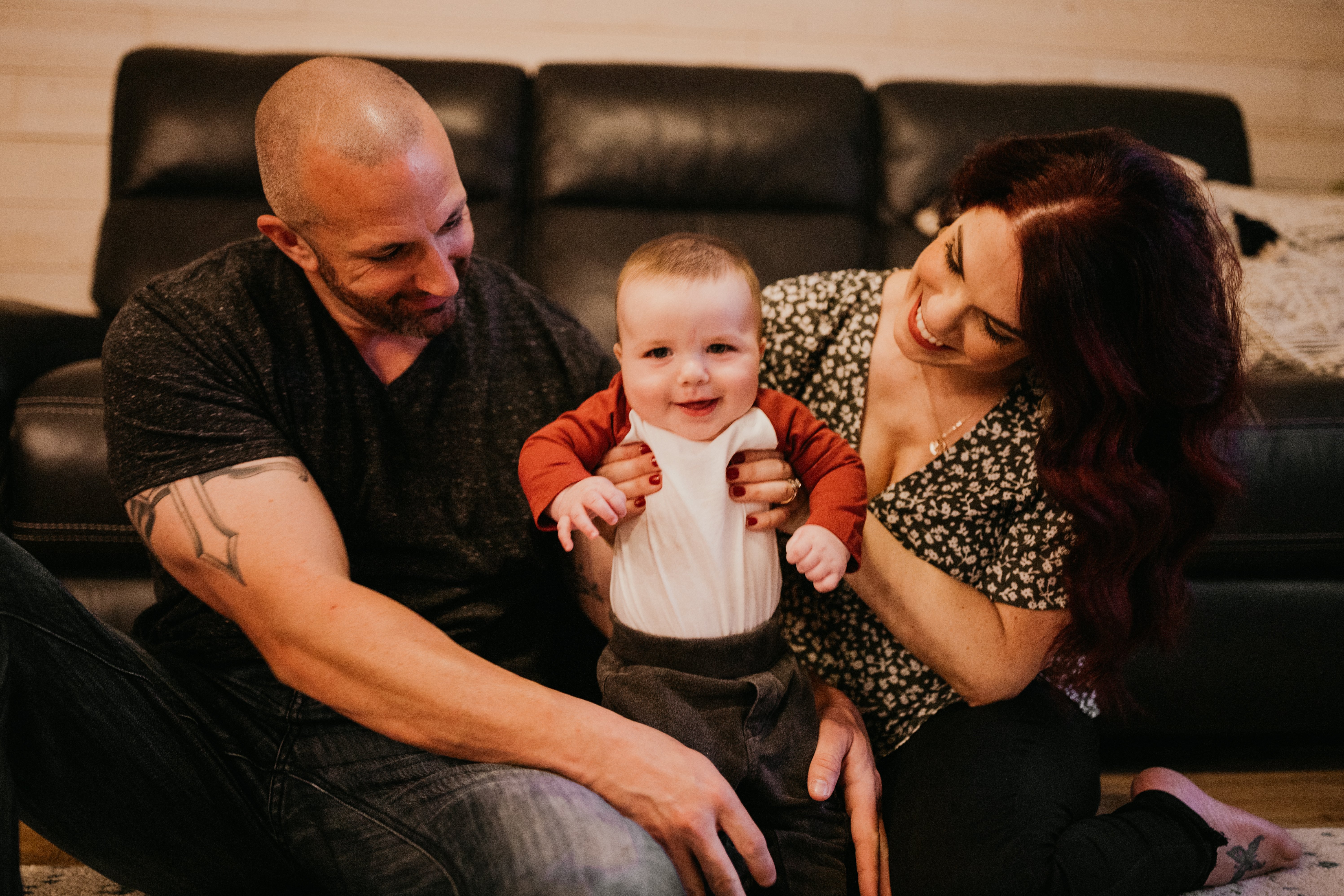
Patient Story
Dani & Corey
When corey and i got married, our plans looked like this: to have our first child within the year, then have our children one year apart, but what we didn’t know was what the journey would look like to get there., being the planner that i am (which doesn’t go well with trying for a baby or fertility treatments), corey underwent testing in 2018. corey was 40 at the time, so he decided to get the ball rolling first, and soon learned that he had low sperm count. the doctor put him on clomid (crazy right i thought that was just a medicine for us ladies) with hopes that his sperm count would increase — and it did, it just took time., with corey’s sperm count up, we seriously started trying, but each month that passed was different than the one before. my periods would come late — sometimes 45-day cycles, sometimes 55-day cycles, and even sometimes 20-day cycles, but the thing that remained constant was that i wasn’t getting pregnant. how was i supposed to tell when i ovulated based on my crazy periods, we told ourselves that we would seek medical help if we reached to the 1-year mark of trying with no success. well, we reached that mark, and then some. i did my research on fertility centers in tampa and came across shady grove fertility. at that time, sgf was new to the area, but we decided to take our chances and learn more about scheduling an appointment. we spoke with a patient coordinator, and she couldn’t have been nicer corey and i felt valued – you know, not just a number., we met with dr. celso silva for our consult on april 2, 2019, and we were in awe of his genuine passion to help couples get pregnant. with dr. silva, we felt like we were home. he helped us feel comfortable in choosing our next steps and assured us that we would have a family at the end of it., and so, our journey with sgf begins, after months of testing, we found out three things: i don’t really ovulate (i knew it), i likely have polycystic ovary syndrome (pcos), and the rest is unexplained. it was a relief to learn that there was truly something there that was stopping corey and i from getting pregnant naturally., we decided to start off with the iui. i couldn’t wait to start my period, so we could get this going, and trust me, i never thought i would want to start my period so badly. with my protocol mapped out and my meds in hand, i was ready for this, on july 16, we had our first iui. i thought it would work since i had a nice juicy follicle. that was all we needed, right well, it didn’t work, and we were heartbroken. i felt as if my body was failing me, and if my body wasn’t helping us fulfill our dreams of parenthood, what was the use in trying anymore, dr. silva recommended that we try 3 rounds of iui before moving on to ivf, so we tried for a second time. i had this mindset of, “why would a second time work if the first time didn’t” on august 11th, we tried for a second time. this time, i had a few more follicles, so i was thinking that it would for sure work this time., but, you guessed it; it didn’t work. i was numb to the feeling of defeat since we have been trying for so long. we decided to go for the iui one last time, as suggested by dr. silva, but wanted to be proactive in case it didn’t so we scheduled an ivf consult in the meantime. to be honest, i really didn’t want to try a third time. i was tired emotionally and physically, wanting to take a step back and rest for a bit. but corey and his words of affirmation would say, “we got so far, just one more time, it won’t hurt. it could be the time” i wanted to go straight to ivf, but corey and dr. silva were hopeful, so we tried a third time., after rain comes sunshine, this third iui was different: dr. silva changed my medications to increase our odds, plus there were all these stressors outside our control. during the first week of september 2019, tampa was on the verge of getting wrecked by a hurricane. it looked like the hurricane was going to hit us head on, possibly interfering with our final iui., thankfully, mother nature was on our side, and my iui went according to schedule. i went to the office for my first ultrasound to see how many follicles i was producing, yet we couldn’t seem to find them. turns out there weren’t any in my right ovary we proceeded to look in my left ovary, and guess who decided to be camera shy my left ovary was literally hiding, but what we did see to my dismay, was what appeared to be a cyst or fibroid on my uterus., dr. silva asked that i return the following day to check my ovaries again. well, i came back the next day, and there it was: a massive follicle. it was go time, i was taking that last and final iui with a grain of salt. i was a lot more stressed this time, so i for sure thought, “oh, this is not going to work.” what about that potential fibroid/cyst were we too late to do the trigger shot because of my hiding ovary, but, something in my heart told me to hold on to that last bit of hope i had left, so i did..
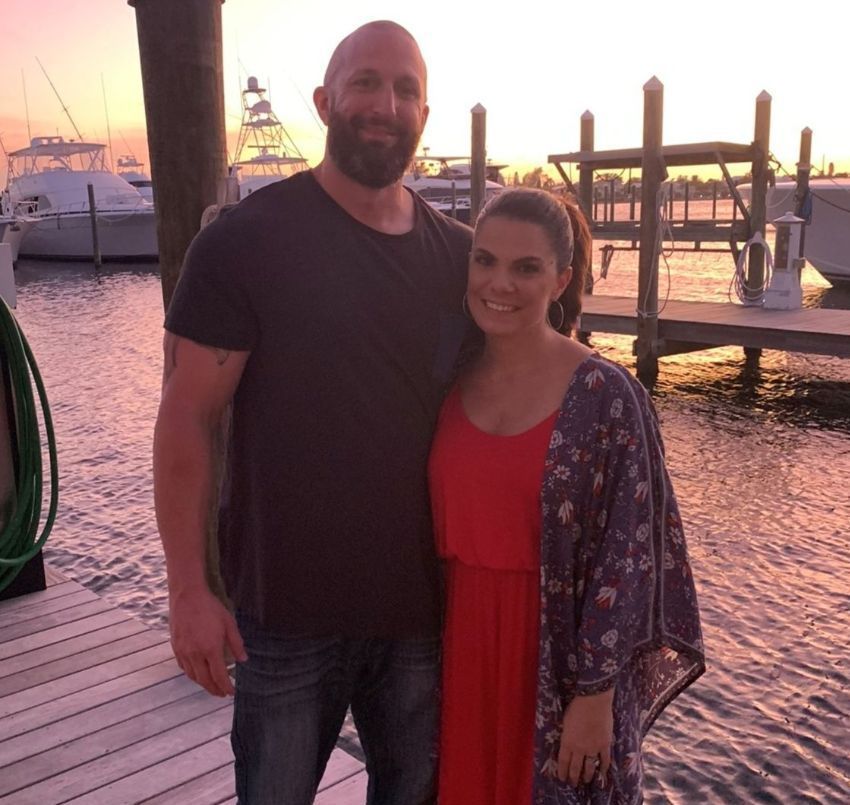
Third time’s the charm
On september 6th, we had our final iui, the last one before moving on to ivf if unsuccessful. i remember waiting in the exam room, and before each iui, i pray — i pray that it works. but this time, my prayer was different. i thanked god for getting us this far because no matter the outcome, i was grateful we made it here., we completed the third iui, and the “two week waiting period” began. nearly 10 days later, corey and i were preparing for our first ivf consultation when i started spotting. the timing synced with my natural cycle, so i figured it was my period knocking. i told dr. silva about it, but he didn’t rule out pregnancy quite yet. there was something in the air because both dr. silva and corey kept saying, “we think this third iui worked.” i, of course, didn’t listen and started to prepare my heart and mind for ivf., on september 18th, 2 days before my pregnancy test at sgf, i woke up with the worst cramps must be aunt flow making her grand arrival, right a pregnancy test was sitting in the bathroom, and i thought, “why not take one last one during our iui journey”, so, i took the test, and it was…positive, it was 6 a.m., and i drove myself to walmart to get more pregnancy tests just to be sure. well, 15 tests over the course of 2 days later (yes, i am crazy and don’t recommend taking that many), the lines kept getting darker and darker., i kept thinking, “no way, this still has to be my trigger shot in my system” i consulted with my sgf/ttc/infertility-sister-turned-bestie, cyndel, and she thought for sure that i was pregnant i was hesitant to believe it was true because i was so accustomed to seeing the negative pregnancy test., on september 20th, i went in for my first beta test with cyndel and received a phone call from my nurse 4 hours later., “hello” i asked., “hi, dani. i have a question for you: do you feel pregnant” my nurse asked with the most epic mic drop ever, cue the tears. it really happened — i was pregnant.
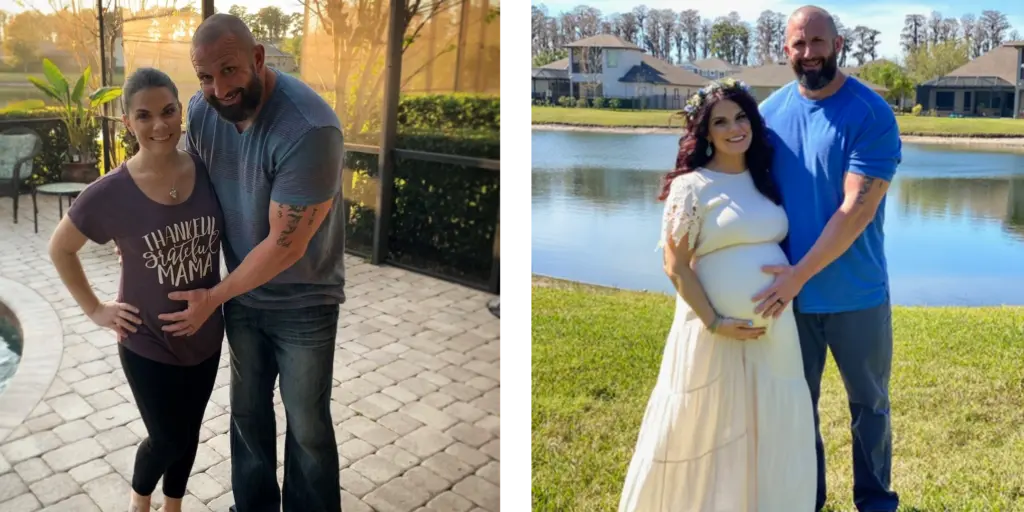
Never in my life would I have thought that the third IUI would have worked, but the one thing that we didn’t have against us was hope. When I couldn’t find any more hope, it always showed up. Whether the hope was coming from Corey, my family, friends, Cyndel, or the SGF staff, it was always there. I wouldn’t have been able to overcome infertility and treatment without it. And to tell you the truth, I wouldn’t have been able to get through life without it.
On may 21, 2020, we welcomed our sgf miracle, gunner kemp johnson. his name means “warrior.”.
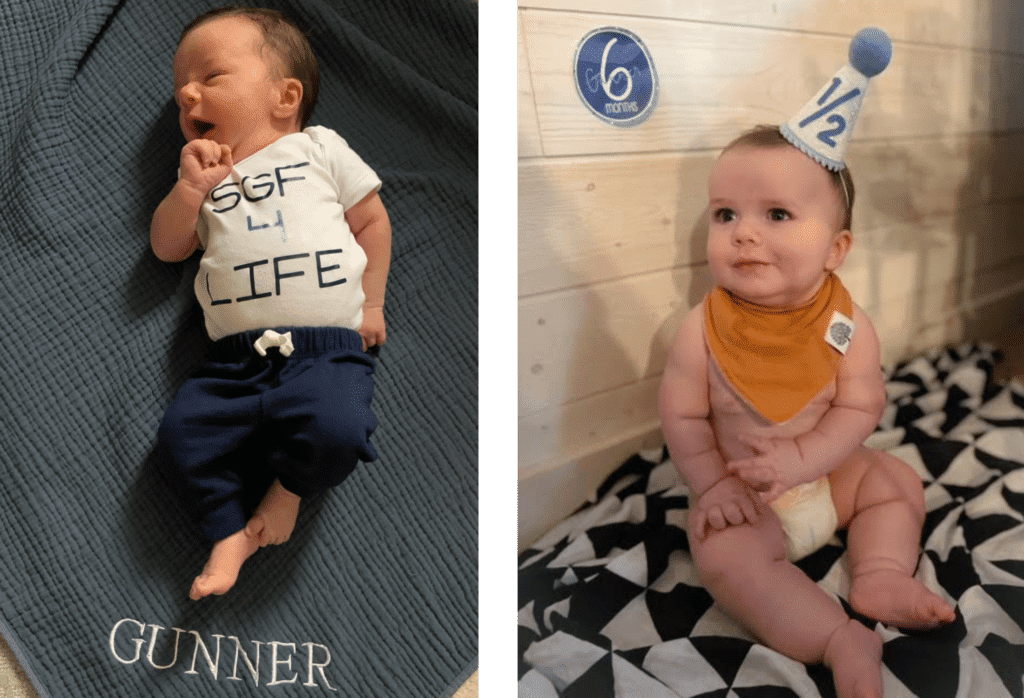
Life as a family of three is beyond my wildest dreams! As a new mom, I don’t know what I am doing half the time, but whatever I am doing, is making Gunner the happiest baby. We call him the unicorn baby because he is so sweet, full of smiles, and happy all the time. The biggest challenge so far has been having a baby in the middle of a global pandemic. He still hasn’t met a few family members and friends, leading Corey and I to feel isolated most days, but we have learned how to move forward. Our entire world has changed for the better.
We plan to start trying for baby number 2 with sgf in a few months – we would love for gunner to have a little brother or sister. after going through iui treatments already, we know how long the process can take, so we want to get started we know it may not be easy, and we know it may not work on the first or even second try, and that’s ok, because we have gunner..
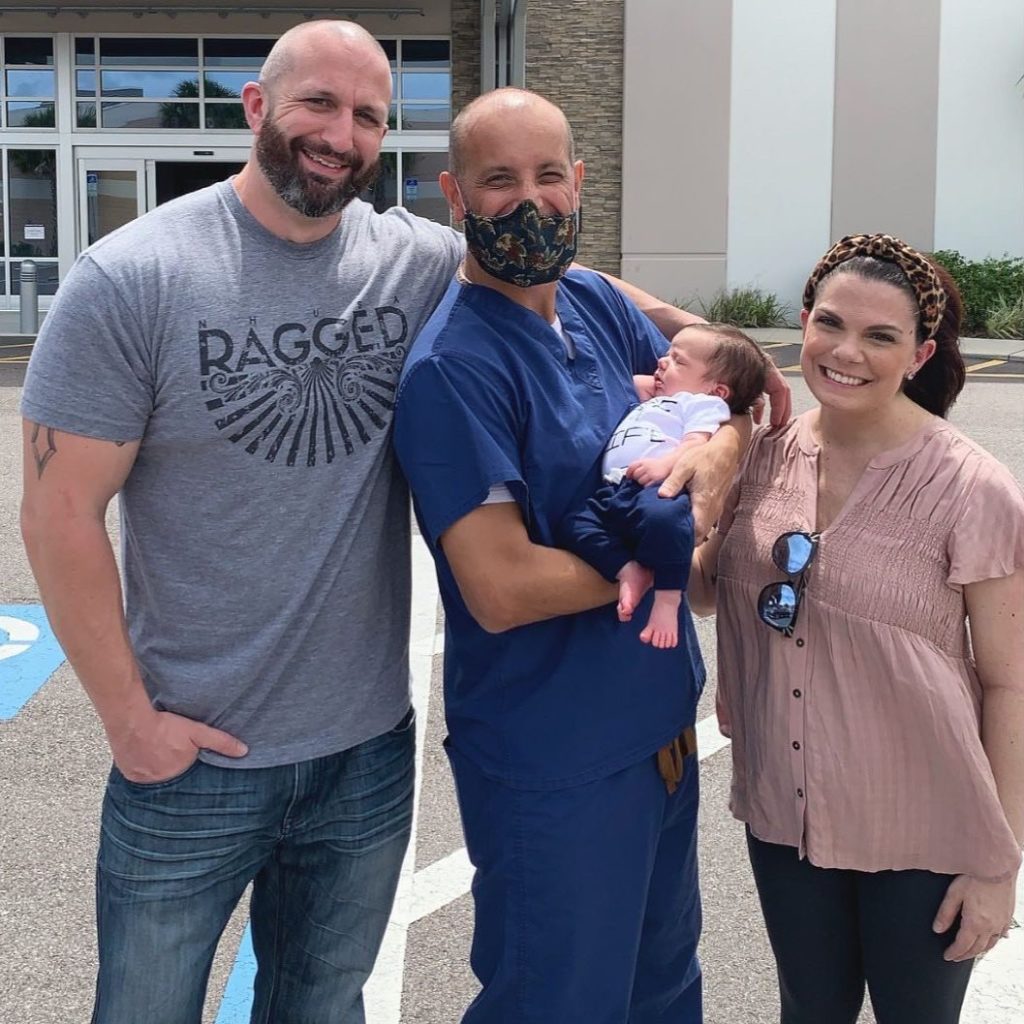
Words of wisdom to others on their path to parenthood
If you’re on your journey to starting a family, and find yourself getting frustrated month after month, just know, as cliché as this sounds, it will happen. it may not happen on your timeframe or the traditional way you may have wanted it to, but i can assure you, hold on to hope, and it will happen. hold on until you get over that mountain, because what is on the other side is beautiful. from one infertility warrior to another, i have hope for you., share your story, share experiences. share hope., need-to-know fertility resources and guidance, diagnosis and treatment, we understand you may have questions about infertility and how it’s treated. gain answers from the diagnosis and treatments shared in this story., infertility terms.
- Intrauterine insemination (IUI)
Polycystic ovary syndrome
- Unexplained infertility
Receiving care
Assemble your fertility care team close to home. explore our different locations and physicians who will provide guidance along your journey., dr. celso silva, tampa, florida location, find a location near me.
- Polycystic ovary syndrome (PCOS)
Related Stories
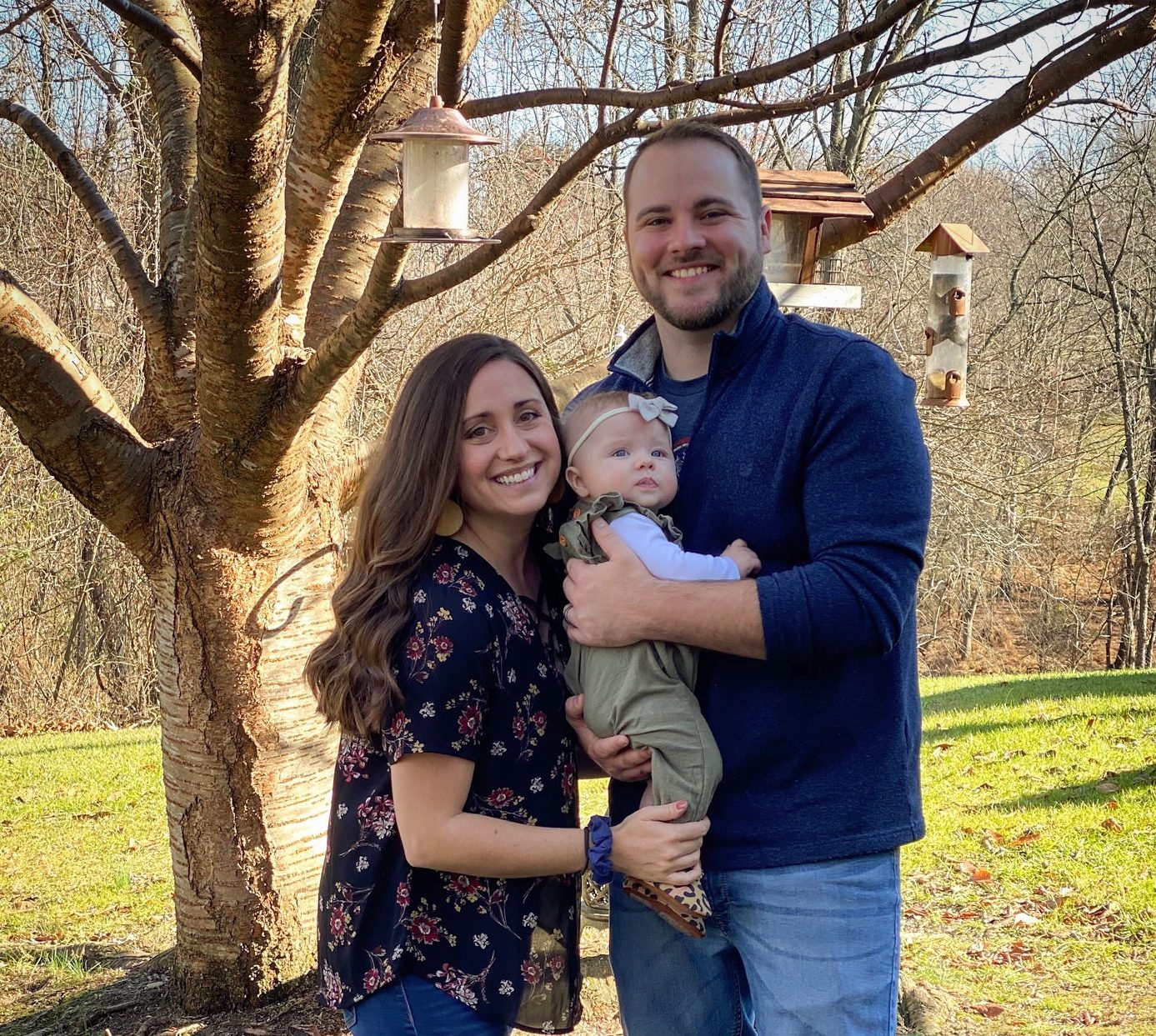
Sara & Chad

Lauren & James
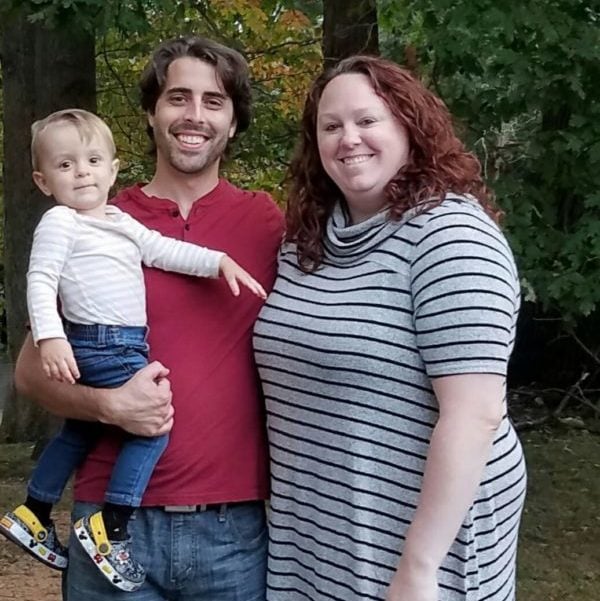
Jessica & Kevin
Sign up for enewsletter.
- Name This field is for validation purposes and should be left unchanged.
2024 Shady Grove Fertility
- PCOS Patients finding Success with IUI
- Julia & Jordan
- Moneeka & Nick
- mohitsaraogi85@gmail.com

7 Days Post IUI: A Journey of Hope and Patience

Embarking on the journey of Intrauterine Insemination (IUI) can be a time filled with hope and anticipation, especially during the critical phase of “ 7 days post IUI .” A mix of emotions and questions often marks this period. As you navigate this crucial time, understanding what to expect and how to manage your well-being is vital.
Dr. Mohit Saraogi, an esteemed infertility specialist at Saraogi Hospital, renowned as one of the best IVF centre in Mumbai, emphasizes the importance of physical and emotional care during this period.
With his extensive experience and compassionate approach, Dr. Mohit Saraogi, widely recognised as one of the best IVF doctors in Mumbai, guides patients through the nuances of post-IUI care. He offers insights into symptom management, emotional support, and lifestyle adjustments that can enhance the chances of a positive outcome.
This blog aims to address the common concerns you might have during the “7 days post IUI” phase. We’ll explore what symptoms to expect, how to differentiate between normal and concerning signs and ways to foster a supportive environment for your emotional health.
First, let’s explore what exactly happens during this critical time:
What Happens 7 Days After IUI?
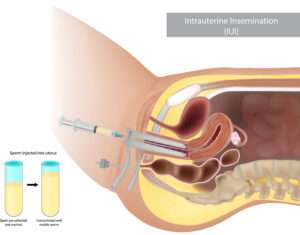
Seven days after Intrauterine Insemination (IUI), a critical phase of the fertility process unfolds. At this stage, the fertilized egg, if conception has occurred, heads towards the uterine lining. This journey is pivotal for implantation. It is a process where the egg attaches itself to the uterus. It’s a hopeful time for many, as implantation is crucial to a successful pregnancy.
During this period, individuals may experience various symptoms. Some report mild cramping or spotting, which can be signs of implantation. However, it’s crucial to note that not everyone experiences these symptoms. Statistics show that about 20-30% of women undergoing IUI report such symptoms, though they aren’t definitive indicators of pregnancy.
The absence of symptoms does not rule out a successful implantation. Ultimately, a pregnancy test, typically taken around two weeks post-IUI, is the most reliable way to confirm if the procedure has been successful.
Schedule a consultation with Dr. Mohit Saraogi today for personalized guidance on IUI treatment in Mumbai .
Understanding symptoms is key. So, let’s delve into what you might experience:
What are the Common Symptoms 7 Days Post IUI?
Seven days after undergoing IUI, individuals often experience a range of symptoms that can vary in intensity. These symptoms are not only physical but can also be emotional, as the wait for potential pregnancy signs can be an anxious time.
Implantation Spotting :
Approximately 20-30% of women may notice light spotting. It is a sign of embryo implantation in the uterine lining.
Breast Tenderness :
Hormonal changes post-IUI can cause breast soreness or tenderness in many women.
Mild Cramping :
7 days after IUI cramping is experienced in about 15-25% of women . It is common and often mistaken for early signs of pregnancy.
Increased levels of progesterone post-IUI can lead to fatigue. It occurs in a significant number of women.
Mood Swings :
The emotional toll of the IUI process and hormonal fluctuations can result in mood swings in some individuals.
Hormonal changes can also cause bloating. It is a symptom reported by a subset of women undergoing IUI.
“7 days after IUI symptoms can be similar to premenstrual symptoms and do not definitively indicate pregnancy,” explains Dr. Mohit Saraogi, a leading infertility specialist in Mumbai. “For accurate results, it is better to wait for a pregnancy test about two weeks post-IUI.” “Consult a healthcare professional for more detailed information and guidance,” he advises.
Experiencing unusual symptoms? Contact us for a consultation to ease your worries.
But that’s not all; let’s consider how to boost your chances of success:
How Can You Maximize the Chances of Success During This Period?
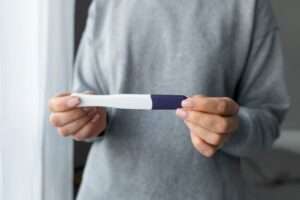
Maximizing the success rate of an IUI procedure involves a combination of medical guidance and lifestyle adjustments. Here are some key strategies:
- Follow Medical Advice : Adhere to instructions provided by healthcare professionals. This includes taking prescribed medications and attending follow-up appointments. Research indicates that compliance with medical protocols can increase success rates.
- Maintain a Healthy Lifestyle : Engage in moderate exercise, maintain a balanced diet, and ensure adequate sleep. Studies show that a healthy lifestyle can improve fertility outcomes. For instance, a diet rich in fruits, vegetables, and whole grains is beneficial.
- Manage Stress : High-stress levels can negatively impact fertility. Engaging in relaxation techniques like Yoga, meditation, or counselling can be helpful. A study found that stress reduction can increase the chance of conception .
- Avoid Harmful Substances : Refrain from smoking, excessive alcohol consumption, and exposure to environmental toxins. Smoking, for example, has been linked to reduced fertility in both men and women.
- Monitor Fertility Signs : Keeping track of ovulation cycles can aid in timing intercourse. Ovulation prediction kits can also be helpful.
- Stay Informed : Educate yourself about the IUI process and potential improvements in fertility treatments. Staying informed empowers patients to make better health decisions.
Identifying early signs is crucial. Let’s look at what to watch for:
What are the Positive Signs of Implantation?
Recognizing positive signs of implantation is crucial for anyone hoping to conceive. These signs, though subtle, can be critical indicators of a successful implantation process.
Light Spotting :
Around 20-30% of women experience light spotting. It is often referred to as implantation bleeding. This typically occurs a few days before the expected menstrual period. It is lighter than usual menstrual bleeding.
Mild cramping is a common symptom reported by approximately 15-25% of women . These cramps are less intense than menstrual cramps. They are often felt in the lower abdomen.
Breast Changes :
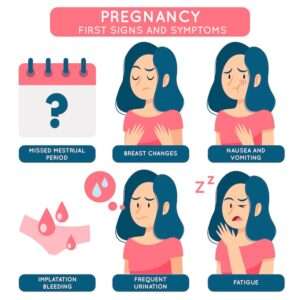
Sensitivity or tenderness in the breasts is a potential sign. It is noted by around 10-20% of women during early pregnancy stages.
Basal Body Temperature (BBT) Changes :
A slight rise in BBT following ovulation can indicate implantation. This is a crucial sign monitored by many women tracking fertility.
Nausea or Fatigue :
While less specific, a sudden onset of nausea or fatigue can also signal implantation. These symptoms are reported by a significant number of women in early pregnancy.
Each body is unique. All women will not experience these signs. While these symptoms can indicate implantation, they are not definitive proof of pregnancy. Consult an expert like Dr. Mohit Saraogi, a well-known infertility and IVF specialist in Mumbai, for accurate diagnosis.
The role of nutrition is often overlooked. Let’s shed some light on it:
How Does Nutrition Affect Recovery Post IUI?

Nutrition plays a pivotal role in recovery after Intrauterine Insemination (IUI) . A balanced diet, rich in vitamins and minerals, helps enhance the body’s healing process. Studies suggest that consuming foods high in antioxidants can improve fertility outcomes. For instance, a diet with a 25-30% increased intake of vitamin-rich fruits and vegetables is linked to better reproductive health.
Incorporating omega-3 fatty acids, found in fish and flaxseeds, is crucial. These fats contribute to around 15% improved chances of successful conception post IUI. Besides, whole grains and lean proteins are essential. They provide sustained energy and support hormonal balance, which is crucial in the post-IUI phase. Limiting processed foods and sugars is equally important, as these can negatively impact fertility.
Hydration is another critical factor. Drinking adequate water, approximately 2-3 litres daily, is vital for maintaining good uterine health. It’s not just about quantity; the quality of nutrients plays a significant role. A diet tailored to individual health needs, ideally under a nutritionist’s guidance, can optimize recovery and improve the chances of a successful IUI outcome.
Comparing stages can be insightful. Let’s see how this stage differs from others:
How Do 7 Days Post IUI Compare to Later Stages in the Process?
- Initial Hormonal Changes : At 7 days post IUI, the body undergoes initial hormonal changes, preparing for potential implantation. This stage is critical for the embryo’s development. But it’s just the beginning of a longer journey. In comparison, later stages focus more on embryo implantation and growth.
- Symptom Variability : 7 days post IUI symptoms can vary widely among individuals. Some may experience mild cramping or spotting, while others feel no changes. In contrast, the later stages, mainly two weeks post IUI, might present more pronounced symptoms. These may include nausea or breast tenderness, indicating successful implantation.
- Emotional Dynamics : The emotional aspect at 7 days post IUI often revolves around anticipation and uncertainty. As time progresses, emotional responses evolve, often intensifying as the wait for pregnancy test results nears.
- Testing Timeline : It’s typically too early to conduct a pregnancy test at 7 days post IUI. Most specialists recommend waiting until at least 14 days post IUI for accurate results. Testing too early can lead to false negatives due to insufficient hormone levels.
In conclusion, navigating the 7 days post IUI can be a period of mixed emotions and expectations. With the right support and information, couples can find comfort and clarity. This crucial week is not just about waiting but understanding the changes and signals of one’s body.
Experienced specialists like Dr. Mohit Saraogi at Saraogi IVF Hospital in Mumbai offer hope and guidance, empowering couples with knowledge and emotional strength on their fertility journey. Despite its challenges, this path becomes one of discovery and optimism with the right medical and emotional support.
Got questions? We’ve got answers; let’s address some common queries:
Q. Can you feel pregnant a week after IUI?
A. Feeling pregnant a week after IUI is unlikely. Early pregnancy symptoms typically don’t appear until at least two weeks after conception. But, you might experience symptoms due to hormonal changes related to the IUI procedure.
Q. Is 7 days after IUI cramping normal?
A. Yes, experiencing cramps 7 days after IUI is quite common. It’s often a result of your body’s response to the procedure or could indicate early pregnancy. But if the cramping is severe, it’s wise to consult your doctor.
Q. Bloating 7 days after IUI?
A. Bloating 7 days after IUI can occur. This is usually due to hormonal changes or medications used during the treatment. It’s typically mild and should ease over time. If it’s bothersome or severe, check in with your doctor.
Q. Can I Continue My Regular Exercise Routine Post IUI?
A. Yes, you can continue your regular exercise routine post IUI. It’s essential to listen to your body and avoid any strenuous activities. If you have a high-intensity workout regimen or doubt, it’s best to discuss this with your doctor.
Q. Is Bleeding or Spotting Normal After 7 Days of IUI?
A. Light bleeding or spotting can be normal 7 days post IUI. It might be a sign of implantation. But, if the bleeding is heavy or accompanied by severe pain, seek prompt medical advice for proper assessment.
Reference Links:
https://americanpregnancy.org/getting-pregnant/intrauterine-insemination
https://www.cdc.gov/art/artdata/index.html
Leave a Reply Cancel reply
Your email address will not be published. Required fields are marked *
Save my name, email, and website in this browser for the next time I comment.
Book An Appointment
Phone Number*

Keys to a Successful IUI: Tips to Boost Your Fertility
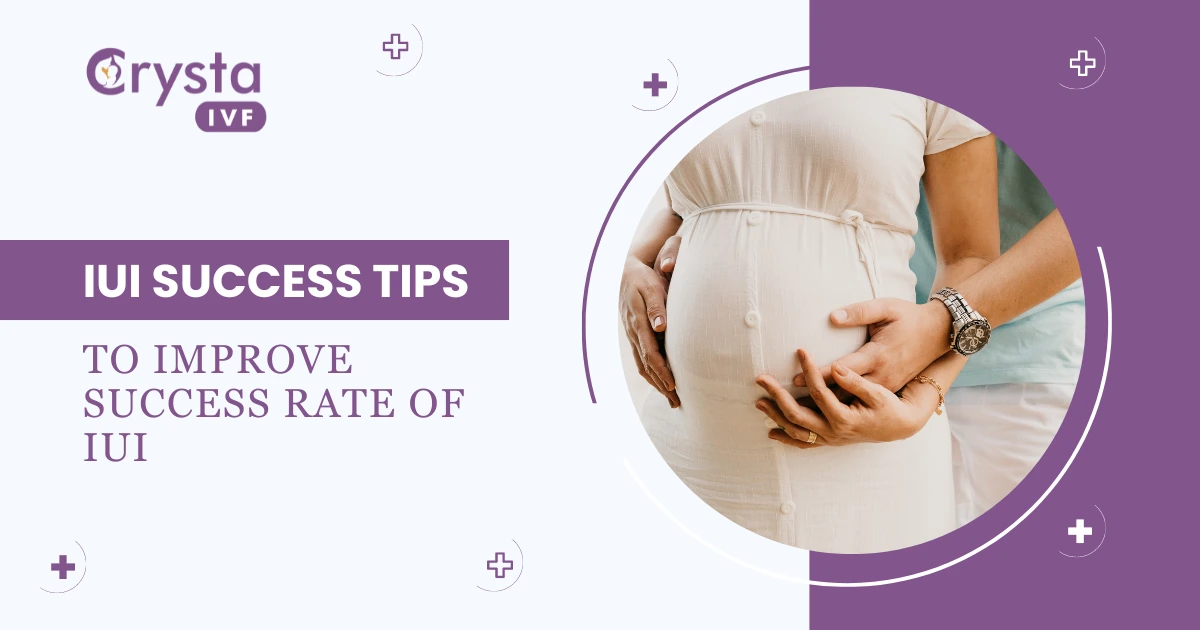
Please Share This Share this content
- Opens in a new window Facebook
- Opens in a new window X
- Opens in a new window LinkedIn
- Opens in a new window Pinterest
Bringing a new life into the world is a cherished dream for many couples. Yet the growing percentage of infertility has placed formidable barriers on their journey towards a healthy pregnancy. Nevertheless, within assisted reproductive technology, Intrauterine Insemination (IUI) stands as a beacon of hope for couples who aspire to become parents at least once. Though the IUI journey against infertility is never easy, comprehensive knowledge and studying the keys to a successful IUI make your IUI journey successful.
Hence, we are back with this blog to help you start your IUI journey successfully, so what are we waiting for? Let’s get started!
Significant ways to improve the success rate of IUI
IUI treatment is a pain-free method of Assisted Reproductive Technology that is mostly performed in male infertility cases. In this treatment, male sperm is directly inserted into the woman’s uterus during her most fertile window. To improve the success rate, the fertility doctor first stimulates ovulation in the woman with the help of certain medications or injections. However, speculation doesn’t end just after performing the IUI treatment. Here are a few keys to a successful IUI to increase your chances of conception if followed after the treatment.
Mild exercise
Doctors typically advise against engaging in rigorous exercise or heavy workouts to enhance the IUI success rate. Excessive physical activity might lead to misleading outcomes instead of the intended results. However, gentle yoga and jogging can help alleviate stress and increase the likelihood of successful conception. It is also recommended to avoid prolonged periods of sitting and strive to maintain an active lifestyle throughout your pregnancy.
Maintain a balanced diet
Research says that your diet directly affects the pregnancy hormone, and you should include more proteins in your diet while cutting down on the percentage of carbohydrates.
Moreover, the oily and junk food intake should be reduced and replaced with healthy, fresh fruits and vegetables during the IUI cycle.
You should include green leafy vegetables, sunflower seeds, salmon, Pomegranate, Lentils and Beans, Asparagus, and full-fat dairy, and avoid white rice, caffeine, soda, energy drinks, and biscuits or cakes.
In short, a healthy diet is crucial to maintaining the health of the mother and the baby.
Use supplements
After an IUI treatment, some supplements are recommended significantly to support the overall process and increase successful conception. However, consulting with your healthcare provider before starting any new supplements is vital.
Here are some of the supplements suggested by fertility specialists:
- Folic acid,
- Omega-3 fatty Acids,
- Coenzyme Q10 (CoQ10),
- probiotics, etc.
Quit Alcohol and smoking
One of the best keys to a successful IUI is to quit alcohol and smoking. As smoking and alcohol consumption lead to lower IUI success rates, they are associated with reduced sperm count and motility. Some studies have also shown that alcohol can decrease sperm count by up to 50%.
Moreover, Drinking alcohol and tobacco can also affect your libido and your ability to get aroused. So, if you are trying to conceive, whether through IUI or naturally, it is best to avoid alcohol and smoking.These toxic substances reduce your chances of successful conception and increase the risk of miscarriage.
According to a study published in the Human Reproduction Journal, women who drank one or two alcoholic beverages per week had a higher risk of miscarriage than those who didn’t drink at all.
In short, women who drank three or more alcoholic beverages per week had a 40% increased risk of miscarriage.
Have sex, but not too much
Engaging in sexual activity following IUI treatment offers significant advantages, as the sperm is pushed to the fallopian tubes during sex. However, having sex frequently can harm your sperm count and motility.
One study even reveals that having sex more than once a week decreases the likelihood of successful conception and affects your IUI success rate by 40%. And if that is not enough, it also affects your libido and aroused ability.
Avoid long Travel Trips
Try to avoid any long trips for the successful outcome of IUI treatment . Various studies have stated that prolonged driving can increase stress, which hurts your ovaries. Because long trips harm your reproductive health, if you are driving for more than two hours, take a break and rest. Meanwhile, if you are planning a long trip, try to control your stress and have enough suitable items for emergencies.
Avoid exposure to harmful radiation
Exposure to radiation shows a negative impact on the IUI treatment effectiveness. Also, a recent study states that men exposed to high radiation levels from CT scans or diagnostic tests had a higher risk of infertility.
Additionally, even minimal radiation exposure can potentially hinder the efficacy of IUI. Contemporary medical practices involve the utilization of X-rays and CT scans, both of which emit radiation.
These radiation forms may adversely affect fertility and escalate the likelihood of miscarriage. Notably, radiation therapy targeted at the pelvic region is associated with a decline in ovarian count. So, if you have a medical procedure entailing radiation, it’s best to consult your fertility specialist regarding alternative approaches.
The above-listed methods are the best keys to a successful IUI treatment. After you have followed these steps, it is time to look out for IUI success symptoms.
Symptoms of IUI pregnancy
The common IUI success symptoms to acknowledge are:
- Abdominal Pain
- Bleeding
- Sore Breasts
- Mood swings
- Cramping
- Vaginal Discharge
- Mild to moderate discomfort
- Dizziness, Nausea, and vomiting
IUI treatment can bring miracles into your life and break the cycle of constant infertility. Despite following IUI success tips, many couples become concerned about the IUI success rate. However, there’s no need to worry when it comes to IUI; its success depends entirely on factors such as the woman’s age, underlying fertility issues, sperm quality, and the expertise of the medical team. If you have additional questions, consult a fertility specialist to plan your treatment accordingly.
Start your parenthood journey—talk to a fertility expert now!
IUI is the most popular method of Assisted Reproductive Technology and is commonly performed in cases of male infertility. Consulting your fertility specialist is essential if you are in the early stages of your IUI pregnancy. Regularly visit the best IUI center in Delhi to address any treatment-related complications and enhance your chances of a successful pregnancy. This proactive approach ensures a trouble-free pregnancy phase, facilitates a healthy baby delivery, and allows you to cherish your parenthood journey.
Verified by Crysta IVF Fertility Experts
Shivangi Prajapati
Leave a Reply Cancel reply
Save my name, email, and website in this browser for the next time I comment.
You Might Also Like

IUI Treatment Cost in Hindi – आईयूआई में कितना खर्च आता है?
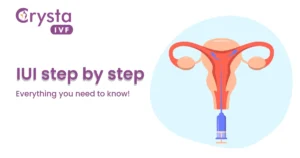
IUI Procedure: How does the IUI treatment works step by step?
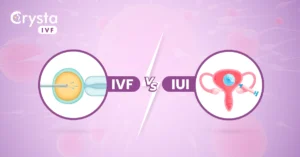
IUI Vs. IVF: Find the biggest difference between IUI and IVF
Kindly fill out the form to talk to the fertility experts..

Azure Developers .NET Day is back on April 30th! Join the .NET community to learn cutting-edge cloud development techniques from experts on cloud services for AI, data, cloud-native, and developer productivity. Elevate your cloud development skills today!
The Journey to Accessible Apps: Keyboard Accessibility and .NET MAUI

Rachel Kang (SHE/HER)
April 29th, 2024 0 0
Are your apps keyboard accessible? Let’s take a look:
- Launch one of your apps.
- Attach a physical keyboard if one is not already attached to your device.
- Navigate your app as you typically would, and use only your keyboard to do so.
How did that go? Was it easy? Did it match your typical experience navigating your app?
Ensuring your app experiences are just as awesome when navigated exclusively via keyboard is essential to building an app experience that is inclusive and accessible to all.
Web Content Accessibility Guidelines (WCAG)
To understand what exactly constitutes keyboard accessibility, the Web Content Accessibility Guidelines (WCAG) is a great place to start.
WCAG is a set of technical standards on web accessibility that is widely referenced and extended to various applications and platforms beyond web. It has become a global standard and legal benchmark and continues to evolve with the evolving landscape of technology.
Of the various guidelines is Guideline 2.1 , a guideline that is often overlooked, which says that developers should “Make all functionality available from a keyboard”.
This includes four success criteria:
Success Criterion 2.1.1 Keyboard All functionality of the content is operable through a keyboard interface without requiring specific timings for individual keystrokes, except where the underlying function requires input that depends on the path of the user’s movement and not just the endpoints. Success Criterion 2.1.2 No Keyboard Trap If keyboard focus can be moved to a component of the page using a keyboard interface, then focus can be moved away from that component using only a keyboard interface, and, if it requires more than unmodified arrow or tab keys or other standard exit methods, the user is advised of the method for moving focus away. Success Criterion 2.1.3 Keyboard (No Exception) All functionality of the content is operable through a keyboard interface without requiring specific timings for individual keystrokes. Success Criterion 2.1.4 Character Key Shortcuts If a keyboard shortcut is implemented in content using only letter (including upper- and lower-case letters), punctuation, number, or symbol characters, then at least one of the following is true: Turn off A mechanism is available to turn the shortcut off; Remap A mechanism is available to remap the shortcut to include one or more non-printable keyboard keys (e.g., Ctrl, Alt); Active only on focus The keyboard shortcut for a user interface component is only active when that component has focus.
A fundamental understanding of these criteria will help you get started in developing apps that are keyboard accessible.
Keyboard Accessibility and .NET MAUI
On top of various other considerations, .NET MAUI was designed with the intention of enabling easier development of keyboard accessible experiences. Consequently, developers familiar with Xamarin.Forms keyboard behaviors noticed some changes that were made to improve keyboard accessibility in their apps.
For all functionality to be operable through a keyboard interface, it is essential that all interactive controls are keyboard focusable (can receive keyboard focus) and keyboard navigable (can be navigated to and from using the keyboard). This also includes avoiding making invisible content keyboard accessible. Just as we should expect visible controls to be keyboard focusable and navigable, we should expect invisible/nonexistent controls to not be keyboard accessible or present whatsoever.
To avoid keyboard traps, we ensure keyboard navigation is possible into, within, and out of all relevant controls within the current view. For example, if you navigate a screen with multiple CollectionViews, .NET MAUI aligns with standard keyboard accessibility expectations, enabling you to easily navigate into, though, and out of any of the CollectionViews via standard keyboard navigation patterns.
So how exactly does .NET MAUI enable you to create keyboard accessible experiences more easily? Here are just 3 examples:
1. Keyboard Navigation on Modal Pages
One area in which .NET MAUI intentionally accounts for keyboard accessibility is with modal pages. When a modal page appears, as with all other pages, it is important to ensure that everything on the page is accessible. With modal pages in particular, however, it is also especially important to ensure that anything on the underlying page is not keyboard accessible and is not surfacing up to the modal page.
When a modal page appears, the first keyboard focusable control on the page should receive focus. Then, all the content on the modal page should be accessible, and all the interactive controls, which should include an exit option (commonly “Save” or “Close”) from the modal page, should be keyboard focusable. Once and only once the modal page is exited, the focus should be returned to the underlying page, and the first keyboard focusable control on the underlying page should receive focus once more.
This complexity is handled by the .NET MAUI framework, so your modal pages navigate accessibly right out of the box!
2. Keyboard Focus/Unfocus on Android
In developing .NET MAUI, another thing we learned is that it is not possible to “unfocus” an entry on earlier versions of Android. Some control must always be focused. In Xamarin.Forms, “unfocusing” an entry was made “possible” by setting focus on the page layout; unfortunately, this approach created major accessibility issues. For these reasons, .NET MAUI does not allow for this inaccessible behavior by default and highly recommends using a different approach.
The motivation behind utilizing “focus” and “unfocus” in the first place is often tied to showing and hiding the soft input keyboard. Instead of manipulating the focus to achieve this, manage keyboard behavior by using the new SoftInputExtensions APIs !
For example:
If the SoftInputExtensions or other alternative solutions do not work for your keyboard focus needs, the .NET MAUI team would love to learn more about your scenario. Please share with us so that we can better understand your development needs!
That being said, the optional HideSoftInputOnTapped property was introduced in .NET 8 . Applying this property enables users to tap on a page to hide the soft input keyboard, and we recommend it only be used in exceptional scenarios.
3. Keyboard Accelerators
As with all awesome, accessible solutions, designing with accessibility in mind means designing for all. This is especially the case for keyboard accessibility, where enabling nifty keyboard behaviors benefits all keyboard users, from those who leverage keyboard as their primary input mode, to power users who are partial to using keyboard shortcuts, also known as keyboard accelerators.
In .NET MAUI, we built out a solution for keyboard accelerators . With keyboard accelerators, all keyboard and desktop users can leverage keyboard shortcuts to activate menu item commands!

As captured in .NET MAUI documentation, here is how you can get started with attaching keyboard accelerators to a MenuFlyoutItem in XAML or C#:
Be sure to include the keyboard accelerators in your .NET MAUI app if you aren’t already, and apply your new knowledge from WCAG Success Criterion 2.1.4!
The Journey to Accessible Apps
With .NET MAUI, you have the power to build your apps to be fully keyboard accessible and void of keyboard traps, and to do so more easily than ever before.
If you are new to The Journey to Accessible Apps, welcome! Be sure to check out my previous blog posts to learn more about building accessible apps, and how .NET MAUI makes it easy.
You can gain more context about other keyboard accessibility improvements made in .NET MAUI, by checking out the last blog post on meaningful content ordering and the decision to remove tab index .
.NET MAUI helps you to build accessible apps more easily than ever before. As always, let us know how we can make it even easier for you!

Rachel Kang (SHE/HER) Product Manager

Leave a comment Cancel reply
Log in to start the discussion.

Insert/edit link
Enter the destination URL
Or link to existing content

- Departments
Groundbreaking Growth: Journey With AUS Latest Expansion Unveiled with West Infill and TSA Checkpoint 3 Project
The fly aus blog.
Howdy, fellow Austinites and jet-setters alike! Get ready to fasten your seatbelts because Austin-Bergstrom International Airport (AUS) has embarked on its next major Journey With AUS expansion project, and it's going to be a game-changer. The West Infill and Transportation Security Administration (TSA) Checkpoint 3 Expansion is set to enhance the way we travel through AUS, and boy, are we excited about it! AUS hosted a groundbreaking celebration on Monday, April 22 to mark the start of this exciting new airport expansion project.

This Journey With AUS project isn't just about adding a few extra square feet here and there. The West Infill and TSA Checkpoint 3 expansion project will help transform the Barbara Jordan Terminal into a space that's as efficient as it is welcoming. With a focus on passenger processing and amenities, this project is all about elevating your travel experience from start to finish.
We're talking about a whopping 75,000 square feet spread across four levels, from a new outbound baggage handling to a new mezzanine level. And let's not forget about sustainability: With an Austin Energy Green Building 3-star rating in the cards, we're not just expanding, we're doing it responsibly.

Now, I know what you're thinking. What's in it for me, the traveler? Well, how about 6–8 additional security lanes at TSA Checkpoint 3, so you can move through security like a pro? Or how about a new, upgraded Outbound Baggage Handling system to help ensure your luggage gets to your destination hassle-free?
And let's not forget about the little things that make a big difference. The West Infill project will include expanded ticketing counters, new offices for airport staff, and more. Even with ongoing construction, AUS is working tirelessly to minimize disruptions, aiming to provide a seamless travel experience for all passengers.

So, whether you're a local looking to jet off on your next adventure or a visitor eager to explore all that Austin has to offer, rest assured that AUS is committed to making your journey as seamless as possible. This project is expected to be completed in 2026 so stay updated on construction progress by visiting the Journey With AUS website and get ready to embark on a new era of travel with AUS!
Until next time, happy travels! 🛫
About this blog
Austin-Bergstrom International Airport (AUS) is one of the fastest growing airports in the country. AUS experienced a fast and robust pandemic recovery, with more airline seat growth than any other airport between 2019 and 2022. Follow along the airport’s transformation from a medium-hub airport to a large-hub airport with the Fly AUS Blog. Learn about the airport’s expansion and development program, Journey With AUS, get a behind-the-scenes look at what it takes to operate a 24/7 critical infrastructure facility, learn about career and business opportunities, get the latest on airport concessions, nonstop services and more.
2024 February

- Diablo II: Resurrected
- Diablo Immortal
- Hearthstone
- Heroes of the Storm
- Overwatch 2
- StarCraft: Remastered
- StarCraft II
- World of Warcraft
- Warcraft III: Reforged
- Warcraft Rumble
- Inside Blizzard
Galvanize your Legend in Season 4: Loot Reborn

The forges burn with renewed vigor, stoked by braziers to hone the steel of Sanctuary’s finest. Across the land, Hell’s expanded Legions gather and multiply, marshalling their strength to ambush wanderers that fall prey to their Helltide.
Fresh from our first Public Test Realm in Diablo IV, Season 4: Loot Reborn begins on May 14 at 10 a.m. PT . Use the Itemization overhaul on new systems, Tempering and Masterworking to change a noteworthy blade into a force to be feared. Across all World Tiers, Helltide is reborn: slay monstrosities to fill your threat meter, marking you as prey for the Hellborne . Prepare to fight side by side with the Iron Wolves —a seasoned mercenary company of brethren aiming to quell the demons.
Itemization Reforged: Masterworking, Tempering and More
Helltide reborn, andariel joins the fray & tormented echoes, your greatest challenge: the pit of artificers, fight with the iron wolves, earn rewards with the season journey and battle pass, acquire fabled threads from tejal’s shop, community guides for season 4, stay up to date with diablo iv news.
Seasons within Diablo IV bear their mark on Sanctuary in the Seasonal Realm, unearthing new quests and fresh mechanics to explore and master. Season 4: Loot Reborn takes on a new theme, overhauling many core game systems to refresh how items are earned, how they function, and how they improve as you level through World Tiers during the season.
Unlike previous Seasonal themes that affect only the Seasonal Realm, with Season 4: Loot Reborn, these Itemization changes persist beyond the Seasonal Realm and affect the Eternal Realm as well. Read on to learn how Itemization will change the way you loot and reap your way across all of Diablo IV.
All updates to our new items, Classes and Skills will be available in our Season 4 Patch Notes, which will be available here following our Developer Update stream on May 2.
General Item Updates
One of our several goals for the Itemization changes is to make it easier to understand which items are upgrades when they drop. We reduced the number of affixes on items (down to 3 on Legendary items, 2 on Rare items) and made these affixes more effective. Instead of seeing an affix that relies on conditional values (+10% damage on non-injured Elites), you'll see affixes such as base increases to your Movement Speed, Max life, or single ranks of a Core Skill. Dropped Items are now simpler to evaluate, and we've moved their complexity and customization to our new crafting systems, Tempering and Masterworking, which we will describe in more detail below. We've also increased the overall values of these affixes, so they should feel more powerful!

This screenshot displays an item under the Itemization changes with a Greater Affix.

Item affixes after Itemization changes, with Tempering and Masterworking applied.
By making items more individually impactful, we’ve significantly decreased the number of items that drop when slaying Monsters. The goal here is to spend more time obliterating and less time sorting through the many items that drop. The result is that fewer items will drop overall, but those items will be more likely to be valuable. To compensate and stay on par with the norm, materials gained from Salvaging and Crafting have been adjusted to match this change. Also, Forgotten Souls can now be earned from Whisper bounties and are a rare drop from all Elites. The Gold cost to re-roll items when Enchanting now has a maximum, and we’ve cut down on the materials needed to perform all activities when at the Blacksmith.
Additionally, which World Tier you play in will directly affect the rarity of the items you earn. Sacred items or higher only drop in World Tier III, and only Ancestral items will appear in World Tier IV. Similarly, Legendary items dropped from enemies over Level 95 will always have a value of 925 Item Power.
However, keep an eye out for Uniques—some have a chance to appear starting in World Tier I and II. All Uniques have a chance to drop starting in World Tier III, and Uber Uniques can start appearing as once you’re killing monsters that are Level 55 at max Item Power level.
Codex of Power Updates
Extracting Aspects from Legendary items now stores them in your Codex of Power to be used indefinitely. Instead of taking up space in your inventory, the Codex of Power is a library that stores your most-powerful extracted version of that Aspect, which can be used as many times as you want.

The Codex of Power displays all available Aspects, so you can spend more time seeking the highest Aspect rolls possible. Once the Aspect with the maximum potential value is extracted, a specific border indicates the Aspect has been completed.

Aspects can now be favorited within the Codex of Power, and a tooltip will denote whether you already have that Aspect equipped when searching within the Codex. Note that in the Seasonal Realm, when the Season ends, your Codex of Power will reset and retain those learned affixes for the Eternal Realm. If you already have the same Aspect learned in the Eternal Realm, the Codex of Power will keep the higher of the two.
Tempering: Sharpen your Steel and make it Sing

As you find and learn Tempering Manuals, Blacksmiths across Sanctuary will be able to use these manuals of craftsmanship to shape the qualities of your equipment. Tempering allows you to add potent affixes to your item.

Crafting Manuals can be found as a regular item throughout the game. Once learned, they can be used as many times as desired (like the new Codex of Power changes). Each Crafting Manual contains a small number of affixes, and typically correspond to six different categories: Weapons, Offensive, Defensive, Mobility, Utility and Resource. Simply head to a Blacksmith to Temper your item and add one of the available affixes, greatly reducing the time it takes to ensure your weapon has the affix you desire. Note that Ancestral items can have two Tempered affixes from different categories!

Remember, the Tempering Durability indicates how many times you can Temper an item…even the most battle honed blades can lose their edge. The manuals you learn on the Seasonal Realm last until the end of the season, and manuals learned on the Eternal Realm will be known permanently.
Masterworking: Refine your Weapon to Untold Prowess

Using the rarest of materials found within the deepest mines and caverns, improve your weapons to the absolute pinnacle of their potential. Masterworking is an end-game crafting system, using materials earned from The Pit of Artificers to upgrade your weapons.
Masterworking improves the overall strength of all affixes on your weapon, and at every 4th tier, massively upgrades one of your equipped affixes. The affix that receives the bonus will turn Blue. If the same affix is improved again, it will change to Yellow, and in rare cases, it will turn Orange if improved a third time.

If you hit the max level of Masterworking on a given weapon and you’re unsatisfied with the improvements on your weapon, you can reset and begin the process again.
Greater Affixes
Appearing only on Ancestral Legendary and Unique Items, Greater Affixes are 1.5x more powerful versions of normal affixes. Items with Greater Affixes drop with a distinct audio cue, alerting you to their presence, and have a unique icon both in the world and within your inventory. Each affix on an item has a chance to be a Greater Affix in World Tier III and IV. You cannot Enchant an affix into a Greater Affix—their awesome power may only be discovered.
Gems are simpler, streamlined and more effective across your Character’s journey. Crude Gems have been removed, and crafting levels have been shifted back. Normals Gems are available at Level 51, Flawless at 71, and Royal at 91. Diamonds have had their All Resistance values increased. Topaz now provide increases to Intelligence, and Sapphires increases to Willpower. Amethyst increases your Strength, and Emeralds now provide bonus Dexterity.
Back to Top

The legions of the Burning Hells regroup to coordinate a most formidable display of force in a Helltide reborn. Inspired by the Vampiric Blood Harvest in Season of Blood, your ferocity in combat draws the attention of increasingly dangerous foes. Only the strongest and most well-prepared can survive this potent onslaught. Unless otherwise noted, these Helltide changes affect both Eternal and Seasonal realms and persist beyond the end of Season 4: Loot Reborn.
Threat Levels and Becoming Hell-Marked
As you cleave your way through Helltide, you will now generate Threat. Threat is earned based on the difficulty of the monsters you slay and how often you’re opening Tortured Gifts within Helltide. There are three Threat Levels in total, with each level increasing the danger and frequency of ambushes. Once you hit Level 3, you will become Hell-Marked.

When you’ve been Hell-Marked, you’ll be besieged by a frenzy of densely packed monsters. If you make it out alive, a Hellborn will come for you: one of Sanctuary’s most formidable fallen warriors, now an immensely powerful agent of Hell. The Hellborn can embody one of the classes in Diablo IV. Your Threat Level resets once the Hellborn ambush has been activated, or if you succumb to the overwhelming forces of Hell and perish.
Unholy Blasphemy: Accursed Ritual
At a scene of shocking gore, the Accursed Ritual is the ultimate testament to the disturbing lengths these manic Cultists will go to appease their dark desires. It is here where you can begin the Accursed Ritual.

Baneful Hearts can be earned by opening Tortured Gifts throughout Helltide and by defeating Hellborn enemies. Deposit three Baneful Hearts to begin the ritual, which will commence with a swarm of demonic enemies. This ambush will end with the arrival of the formidable Blood Maiden, an immensely powerful demon who offers great reward upon her death.
Contributing any Baneful Hearts to initiate this dark ritual will grant you increased rewards as a contribution bonus, but sacrificing more Baneful Hearts will yield you further individual rewards!
Helltides in World Tier I and II
To get your feet warmed up to the awesome threat of Helltide earlier on in your character’s journey, Helltide is now available in World Tier I and II. The overall Monster density will be suited relative to these World Tiers, and no roaming bosses or lethal meteors will be present.

Additional Hellish Changes
For the wanderer that want to push the limits of Helltide, an exceptionally valuable new elixir called Profane Mindcage is available to up the ante. Consuming a Profane Mindcage increases the level of Helltide Monsters by 10 and boosts Cinder drop rates. These are a guaranteed drop after killing Hellborne. You will see diminishing returns on boosted Monster levels closer to level cap—keep progressing in World Tiers to retain the same benefit from this potent elixir. The Profane Mindcage will only last until the end of Season 4: Loot Reborn.
Fresh demonic events have been added to Helltide, including new encounters with the fabled Iron Wolves. Stay vigilant for these encounters of demonic treachery.

As a recent change since our Public Test Realm for Season 4: Loot Reborn, Doomsayers no longer drop Chests of Doomsaying. Instead, they now drop the equivalent rewards that a Chest of Doomsaying would have granted on death—entirely removing the Cinder cost it previously held.
There are rumors that there are strange varieties of ore deep within the network of dungeons crisscrossing the north of Sanctuary, perfect for crafting exceptionally-made armor using secret Horadric techniques. However, the horrors that lay in wait for intrepid wanderers seeking to unearth these riches are unspeakably terrible.
Upon entering World Tier IV, you’ll receive a priority Quest to complete a Tier 46 Nightmare Dungeon. Upon completion, you’ll begin to collect Runeshards by playing through different Endgame activities. They’ll appear when you encounter Helltide Chests, World Bosses, Legion Events, Nightmare Dungeons and Whisper Bounties.
Collect Runeshard to activate the Obelisk in Cerrigar, allowing you to descend into the beckoning depths of The Pit. Your task is to slay enough monsters before your 10-minute time limit runs out to summon a final boss. Each player death removes time from the clock: first death removes 30 seconds, second death removes 60 seconds, third and subsequent deaths will remove 90 seconds.
After enough monsters are slain, a portal materializes, transporting you to the boss’s arena. Slay the boss before the timer expires to earn coveted Masterworking materials… and the next brutal tier of The Pit. If you can manage to kill the boss with time left on the clock, the benefit increases. With 4-6 minutes to spare, you skip a level and unlock an additional Tier of the Pit. Killing the boss with 6 or more minutes to spare grants you two additional Tier unlocks. The Pit has 200 total levels of difficulty to try and conquer, if you dare face the challenge.
The Pit can be entered in groups of up to four players, with the player who spends the Runeshards to open the Pit earning the lion’s share of materials. Only the player who opened The Pit has the chance to receive tantalizing Stygian Stones used for summoning Tormented Echoes—Level 200 variants of the summonable bosses found in Diablo IV. The further you descend into levels of The Pit, the more frequent these Stygian Stones will appear.
The Maiden of Anguish has returned in all her tormented glory. She joins the boss ladder at the same tier as her brother Duriel, with the same Uber Unique drop rate. With a mix of Shadow, Fire, Lightning, and her iconic Poison attack, Andariel stands ready to face all who dare fathom to bring about her demise.
Found east of Tasarak, in Hanged Man’s Hall, you’ll need summoning materials from both Lord Zir and Beast in Ice to fight Andariel.
Tormented Echoes
All summonable bosses are now available at Level 200 as Tormented Echoes. Summonable with their regular summon Materials alongside Stygian Stones—which can be found deep within The Pit—these bosses cost more to summon but drop far more rewards. To summon a Tormented Echo, simply go to their typical summon location and select the Tormented Echo variant. Note that to summon the Beast in Ice, you’ll need to craft a different Nightmare Dungeon Sigil.
All items dropped from Tormented Echoes will be Item Level 925. Defeating your first Tormented Echo drops one Resplendent Spark as a first-time reward (account bound).

Seek out the battle-hardened and stalwart Soudeh the Anvil, a stoic field commander of the Iron Wolves. The Iron Wolves are a band of noble Mercenaries in the South, seeking to protect the common people of Sanctuary and hold themselves to a higher code of honor than other mercenary companies of similar mettle. Mysteriously, members of their ranks have been dying under suspicious circumstances—seek out the source of this slaughter to earn the Iron Wolves’ favor.
Meet Soudeh in Khejistan to start your journey to uncover this deadly plot. Working with the Iron Wolves will earn you several Tempering Manuals, which are key to unlocking the potential of your items in Season 4: Loot Reborn.
Any Iron Wolf Events that occur in Helltide will persist past the end of Season 4: Loot Reborn.
As you fight side by side to vanquish demons with the Iron Wolves, you’ll earn rewards from the Season Journey and Battle Pass.
The Season Journey is broken into Chapters with tasks to complete. As you progress through the Journey, you’ll earn rewards befitting Sanctuary’s defenders, such as new Legendary Aspects, and 3 Scrolls of Amnesia, which provide a free Skill Tree and Paragon Board reset. The Journey also provides Favor—the resource used to climb through the Battle Pass’ Tiers— also earnable simply by playing aspects of the game.

The Season 4: Loot Reborn Battle Pass begins on May 14, 10 a.m. PT and hosts 90 Reward Tiers (28 Free Tiers and 62 Premium Tiers).

If you get the Premium Battle Pass , not only will the rewards of the Free Tiers be yours to wield, but Awoken Demigod Armor Sets , Platinum, and more also await you, including the Awoken Demigod Plating Mount Armor , Purified Demigod Thoroughbred Mount , and Divine Banner Mount Trophy , which unlocks at Tier 90 .

The Accelerated Seasonal Battle Pass also contains 20 Tier Skips and the Wings of Hell’s Legion Emote.
Smoldering Ashes earned from the Free Tiers can be spent on Season Blessings that provide helpful bonuses to beat back Hell’s armies. There are three new Blessings for Season 4: Loot Reborn:
- Urn of Nightmares: Boost Paragon Glyph XP earned in Nightmare Dungeons.
- Urn of Iron: Boost your reputation with the Iron Wolves from Helltide activities.
- Urn of Burning Obols: Boost the amount of Obols you can find in Helltide chests, which contain Obols during this season.
The bonuses gained from the five Season Blessings only last until the end of Season 4: Loot Reborn.

We’re dialing up the heat in the Shop with new Equipment, Armor, Accessories, Mount and Mount Armor bundles that will have you slaying in style. Starting on May 14, pay Tejal a visit to browse her wares—remember to check back often, as she’ll update her stock throughout Season 4: Loot Reborn. One such rarefied find from the far reaches of Sanctuary is the the Demon’s Heart Bundle for the barbarian, which contains the Demonheart Armor Set and 2 Demonheart Weapon Cosmetics.
If you need sage guidance in your Character’s journey throughout Season 4: Loot Reborn, look to our Community guides for tips and insights on builds for every class. From levelling in World Tier I, all the way to end-game builds for The Pit.
Visit our trusted Community resources here:
On May 2 at 11 a.m. PT , there will be a Developer Update Livestream, which will take a deep dive into Season 4: Loot Reborn. Join community director Adam Fletcher and members of the development team as they discuss the many learnings from the Season 4 Public Test Realm, system features, balance updates, and more.
Watch the Diablo IV Developer Update Livestream on our Twitch or YouTube Channels on May 2 .
Master the forge and flame to conquer emerging threats in Season 4: Loot Reborn!
-The Diablo IV Team
Next Article
Mount up for the northrend cup, featured news, the cataclysm classic pre-expansion patch is now live, get up to 33% off select classic game services, diablo immortal bug fixes and patch notes for all platforms, step right up at the darkmoon faire, hotfixes: april 29, 2024, arena world championship returns may 3, floral fancies festoon may’s trading post, this week in wow: april 26, 2024, cataclysm classic: leveling in a shattered landscape, an update on this year’s blizzcon and blizzard’s 2024 live events, tune in to our next developer update, 29.2.2 patch notes, embrace two new races in cataclysm classic, hotfixes: april 24, 2024, mwiii content drop: season 3 reloaded, the wow companion app retiring, dragonflight season 4 content update notes, dragonflight season 4 is now live.

IMAGES
VIDEO
COMMENTS
IUI Procedure: 1-2 days post-trigger shot, you'll return to CCRM. The male partner provides a semen sample an hour before the procedure, or previously frozen sperm is used. This sperm undergoes a special wash to separate and concentrate the fastest swimmers. Intrauterine Injection: The selected sperm are loaded into a catheter and gently ...
It was 5, maybe 10 minutes, tops. He shook my moms hands, he asked me how I was feeling, and then said, "It's time.". The actual IUI procedure (intrauterine insemination) was easy and painless. The doctor inserts a teeny tiny flexible syringe-like tool through my cervix and releases the sperm. That's it. Done.
We were experiencing what is referred to as "unknown infertility" — on paper everything looked fine for both of us, but for whatever unexplained or undiagnosed reason we were having trouble conceiving. Given this history, Dr. Melnick decided she wanted to start more conservative and move forward with a natural IUI.
Single Mom By Choice - Erin's IUI Journey Really Riley Society & Culture As a former single mom myself I can empathize with what it means to bring a child into this world knowing that you are more than likely going to have a very different road into parenting that someone who has a partner to help lighten the load.
In conclusion, the keys to a successful IUI involve a combination of understanding the procedure, preparing both physically and emotionally, optimizing fertility health, accurate timing, maintaining a supportive environment, and post-IUI care. While success stories inspire hope, it's essential to approach the journey with realistic expectations.
Back To Blog What to Expect During Your IUI Journey Mar 13, 2024. Fertility Treatment Plan IUI Artificial Insemination. Artificial insemination, often called intrauterine insemination or IUI, is a treatment used to address common fertility issues in either partner or impregnate a woman via a sperm donor. We sometimes call IUI treatment "low ...
Today we're going to talk about intrauterine insemination (IUI) fertility treatment and how to maximize your chances for success. As a reproductive endocrinologist and fertility specialist, I've specialized in helping people build their families for over 15 years. I know that undertaking the IUI journey can feel intimidating.
IUI aims to enhance the chances of fertilization by bringing the sperm closer to the egg, bypassing potential barriers that may hinder natural conception. This blog explores the vital do's and don'ts to follow post the IUI procedure to optimize the chances of achieving a successful pregnancy. Table of Content. 1.0 The Do's
Research suggests that women with unexplained infertility have about a 20-to-25-percent chance of getting pregnant over a few cycles. Women under 35 who choose to do IUI because they aren't ...
They began their fertility journey right as the COVID-19 pandemic hit, which Alicia says made things "a little weird and crazy sometimes - but I loved having a team to guide us through." Alicia and Corey had their first intrauterine insemination (IUI) on March 17, 2020. That's right, just three days after the kick-off of a global pandemic.
The cost of IUI varies based on whether testing, monitoring, and medication are part of your protocol. Foundational IUI. In every case, IUI involves two key steps: sperm washing and insemination. These foundational steps cost between $150 to $500. For those doing natural IUI, these may be the only costs associated with the procedure.
After three IUI's, I wanted to walk through the entire process from start to finish of our IUI journey so you can hopefully have a better idea of what to exp...
The journey toward conception post-IUI is a testament to perseverance and hope, marked by subtle yet significant signs. Understanding and acknowledging these IUI success symptoms day by day empowers individuals with hope, patience, and the ability to interpret their bodies' signals.
Angela Milnes is a Multi Award Winning Blogger, Mom, Early Years Teacher and Cook. Here you will find Parenting Tips, Lifestyle Tips, Kids Crafts, Family Recipes and Plenty of Inspiration getting the most out of Family Life. This is a personal story of infertilty and the process it took for IUI Success and motherhood.
On average, a woman under 35 will have a 10 to 20 percent chance of pregnancy with each IUI, while a woman over 40 will have a two to five percent chance. "The peak IUI effect is around three to four cycles," says Baratz. "If you're going to get pregnant [with], you'll get pregnant within those attempts.".
Insemination is a relatively simple and painless step that's typically performed in the fertility clinic. This step involves inserting a thin, flexible catheter through the vagina and depositing the prepared sperm into the uterus. 5. Pregnancy Test. A pregnancy test is conducted approximately two weeks after the IUI procedure is performed.
Intrauterine Insemination (IUI) When Corey and I got married, our plans looked like this: to have our first child within the year, then have our children one year apart, but what we didn't know was what the journey would look like to get there. Being the planner that I am (which doesn't go well with trying for a baby or fertility treatments ...
Seven days after Intrauterine Insemination (IUI), a critical phase of the fertility process unfolds. At this stage, the fertilized egg, if conception has occurred, heads towards the uterine lining. This journey is pivotal for implantation. It is a process where the egg attaches itself to the uterus. It's a hopeful time for many, as ...
Though the IUI journey against infertility is never easy, comprehensive knowledge and studying the keys to a successful IUI make your IUI journey successful. Hence, we are back with this blog to help you start your IUI journey successfully, so what are we waiting for? Let's get started! In this Article hide. 1 Significant ways to improve the ...
CCRM is one of the industry's leading pioneers in fertility science, research and advancement, offering access to a national network of award-winning physicians, a full suite of fertility services, innovative technology and cutting-edge labs. Building a Family with a Vial of Sperm, Perseverance, and Dolly Parton - One Couple's Journey Through IUI.
IUI DAY!!!!!MY KIDS SWIM LINE IS UNDER $20!: https://foreverfrenchbaby.com/collections/swim-line?view=no-usfåFor all business inquiries please email caitlyn...
It's IUI Day! Today I am sharing with you how our very first IUI went! Thank you for watching. Please Subscribe to follow along on our journey to baby!#trigg...
the use of fertility drugs. If a couple undergoes the procedure every month, the success rate may be as high as 20% per cycle. However, older research from 2010 that evaluated 366 people found ...
This year at the Microsoft 365 Community Conference we had the special opportunity to update our customers on our journey to making SharePoint the best platform for compelling and engaging intranet sites. The core themes of our journey are the same: simpler authoring, compelling content, deeper engagement, and a flexible platform. Following our ...
The Journey to Accessible Apps. With .NET MAUI, you have the power to build your apps to be fully keyboard accessible and void of keyboard traps, and to do so more easily than ever before. ... Be sure to check out my previous blog posts to learn more about building accessible apps, and how .NET MAUI makes it easy. You can gain more context ...
Follow along the airport's transformation from a medium-hub airport to a large-hub airport with the Fly AUS Blog. Learn about the airport's expansion and development program, Journey With AUS, get a behind-the-scenes look at what it takes to operate a 24/7 critical infrastructure facility, learn about career and business opportunities, get ...
The Journey also provides Favor—the resource used to climb through the Battle Pass' Tiers— also earnable simply by playing aspects of the game. The Season 4: Loot Reborn Battle Pass begins on May 14, 10 a.m. PT and hosts 90 Reward Tiers (28 Free Tiers and 62 Premium Tiers).